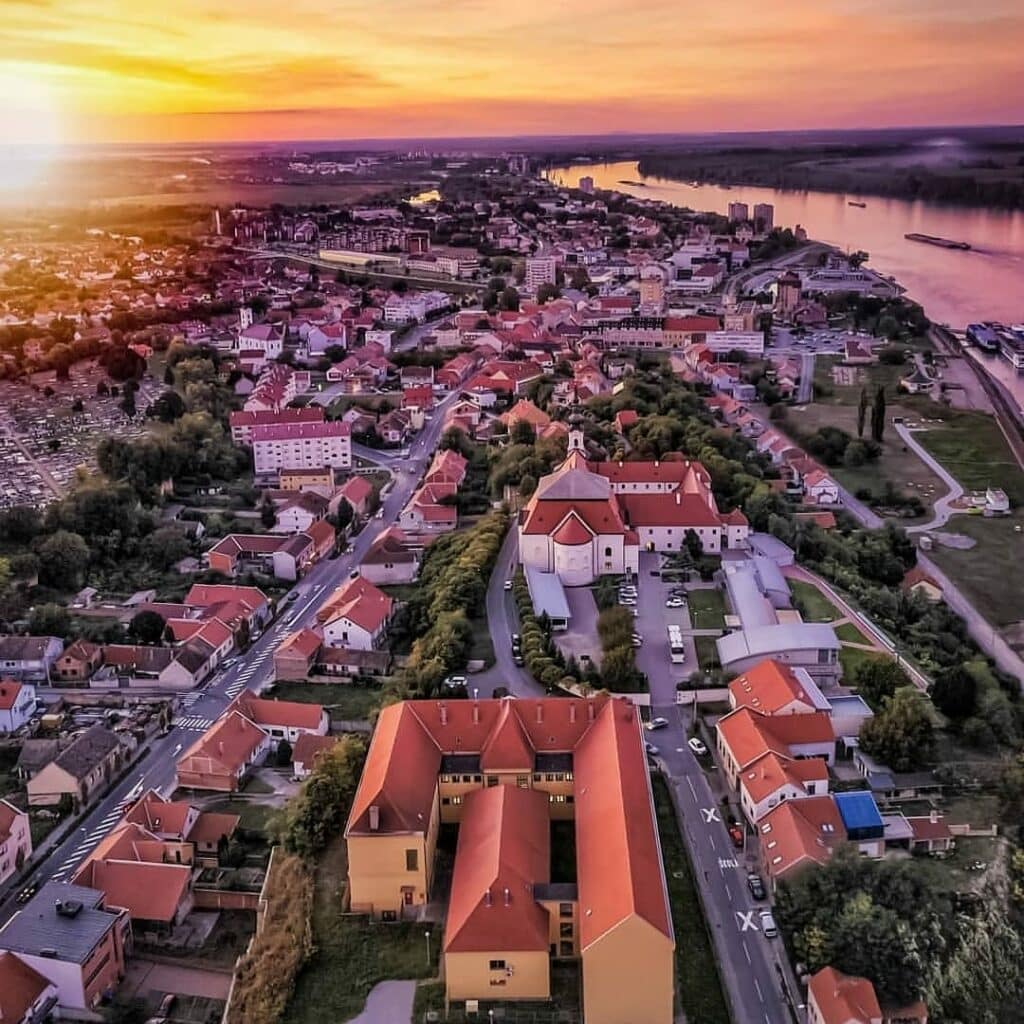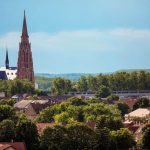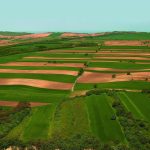Unforgettable, emotive experiences in the capital city of Vukovar-Srijem County, where the Danube meets the Vuka.
- Welcome to Vukovar Croatia
- 5 best things to see and do
- Where to stay in Vukovar? Vukovar hotels
- Where to eat in Vukovar? Vukovar restaurants
- Things you (maybe) didn’t know about the town
- Top 5 day trips
- Where is Vukovar Croatia? Vukovar map
- Vukovar weather
- How to get to Vukovar and get around
Welcome to Vukovar Croatia!
What kind of a place is famous for only one thing? A village? In truth, Slavonian villages are so rich in culture, nature and heritage, most have at least a couple of strings to their bows. So, smaller than a village. A settlement? Maybe a hamlet? Maybe one with a famous, old water well?
Without question, the grand city of Vukovar could never be described as a village or settlement. Indeed, this is a city populated for millennia. Notably, its past former residents include Austrians, Hungarians, Jews, Bulgars, Germans, Romans and the Ottomans. Across centuries, some of them fought over possession of this land. And, looking at the breathtaking beauty of Vukovar today, it’s perhaps understandable why they did.
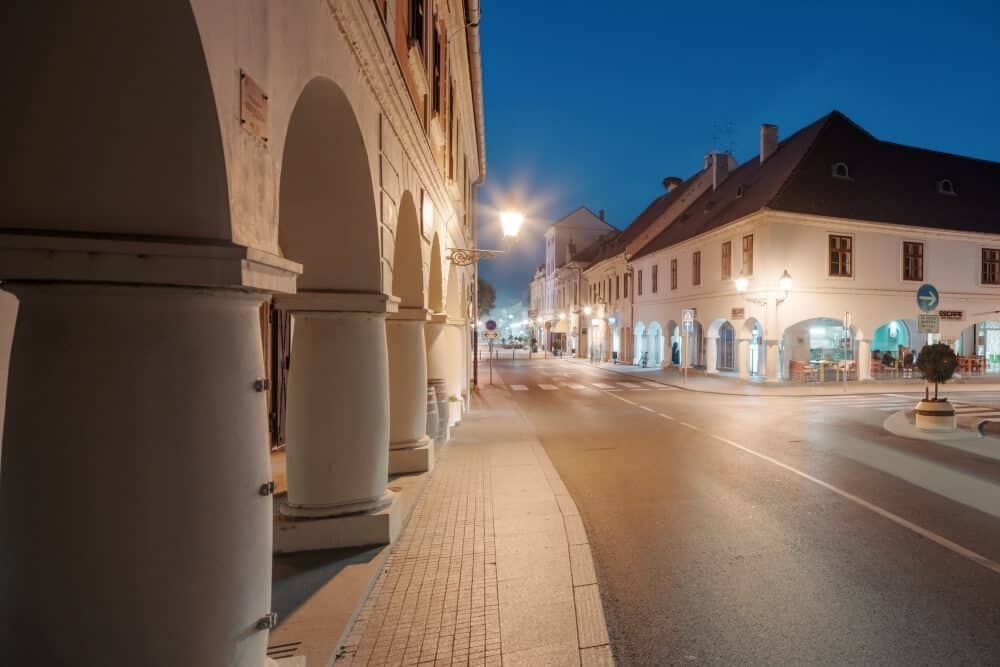
Beautiful, bountiful Vukovar
Of course, it wasn’t just the lovely scenery for which Vukovar’s ownership was contested. Circled by fertile agricultural land and mineral-rich earth, the town also has major strategic importance. Famously, it sits where the Vuka river meets the Danube. Today, that asset manifests itself by Vukovar holding Croatia’s largest river port. Also, it is the county seat of Vukovar-Srijem, the most easterly county in Croatia. Its dining tables are filled with the incredible bounty gifted by the land and endeavours that surround. Its unspoiled, natural assets have never been more in tune with the destinations people currently seek. And yet, all too often, Vukovar is disrespected as being famous for only one thing.
War in Vukovar in 1991 left a scar on Croatia that has proved difficult to heal. Indeed, in Vukovar today, some ethnic tensions remain. The city itself could never be accused of forgetting the incidents of three decades ago. In fact, remembrance is visible all across the town. Whilst being solemnly respectful of this, for outsiders it sometimes helps to have a broad perspective. This town has been the site of much fighting over its possession. Yet, it has lived to tell the tale. And that indefatigable spirit continues.
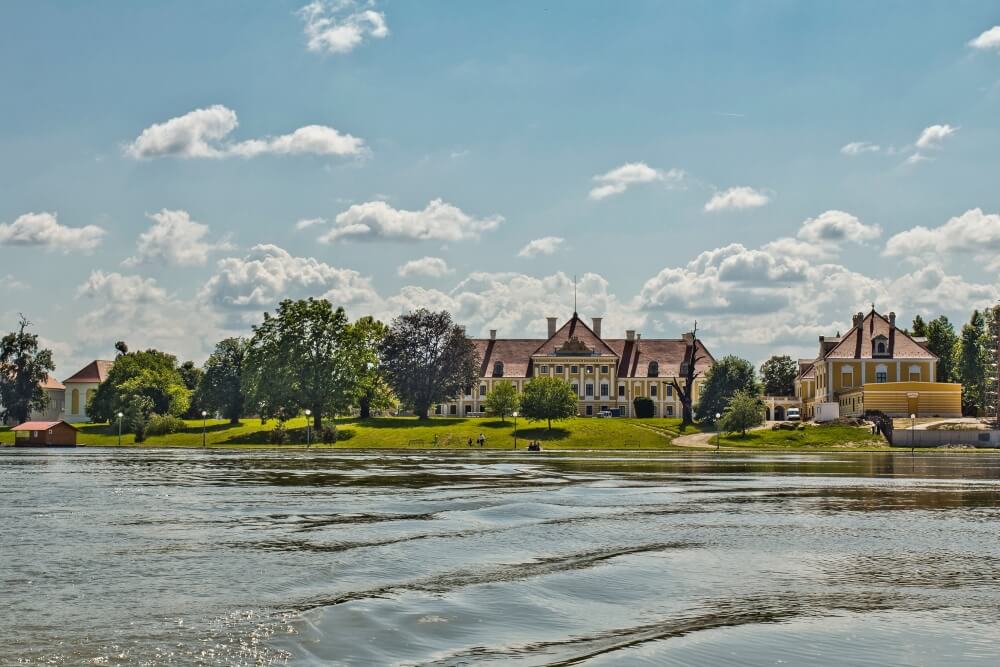
Is Vukovar a village or a city?
Vukovar is not a village. Nor is Vukovar a settlement. You must never speak of it like that. Certainly, there’s a lot more to Vukovar than one famous, old water well. Vukovar is a grand city over whose future men have fought and died. Therefore, it must be treated with the respect those sacrifices demand. There is no respect for Vukovar if you only speak of this city in regards to the past. In fact, there is a future to Vukovar which we simply must speak of to honour it correctly. And, there is a Vukovar now, for which we must do the same. And, that is what we’ll try to do here…
5 best things to see and do
1) Get the most from the Danube river and the Vuka river
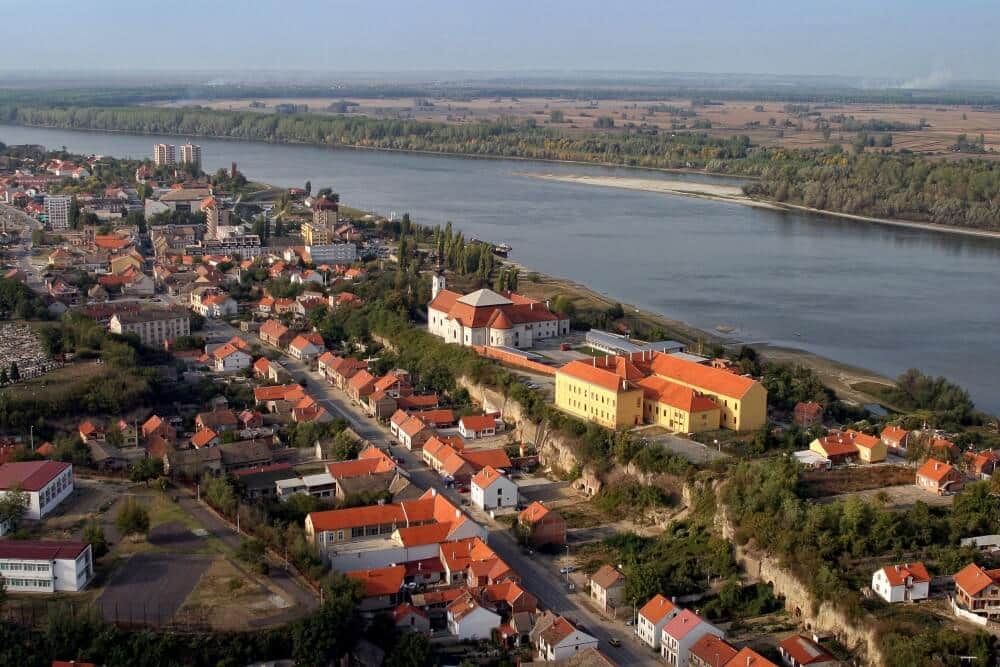
Doubtless, Vukovar’s very position must be attributed to it sitting right where the Vuka river meets the Danube. In fact, these two rivers frame the city, just as they have for centuries. Correspondingly, they offer unmissable recreational options to anyone visiting the town.
a) Boat trips on the Danube
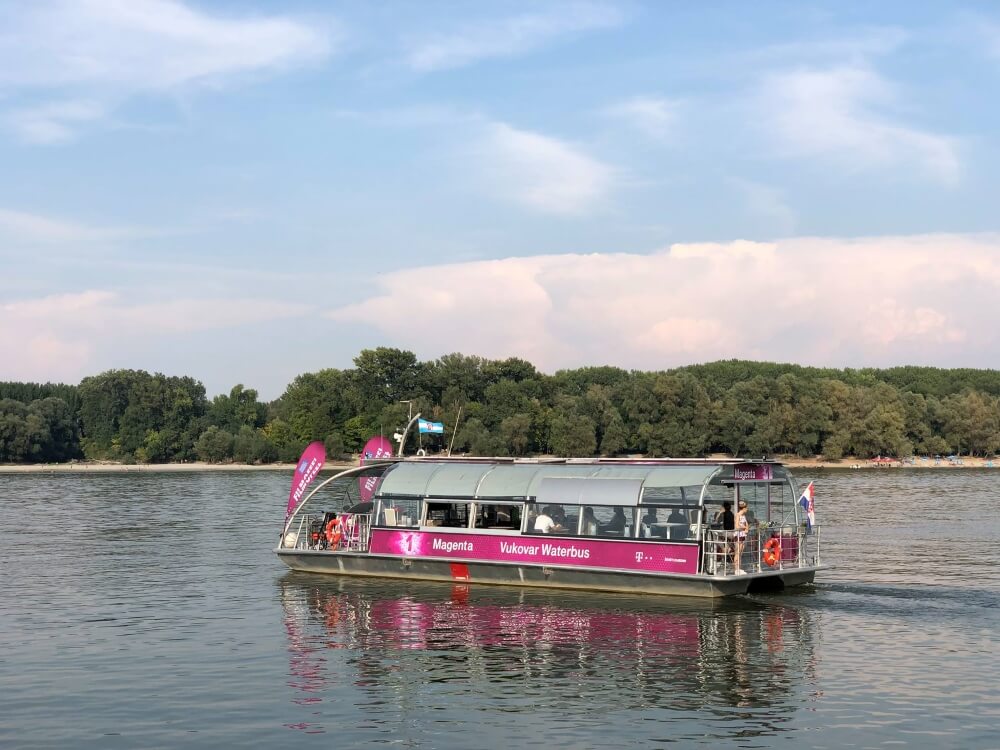
Not only will you see all the riverside sights on the Vukovar Waterbus, but also a guided tour. Alternatively, if you’re looking to rent something smaller and more personal, then talk with St Boniface Motor Boat Club.
b) Rowing on the Danube
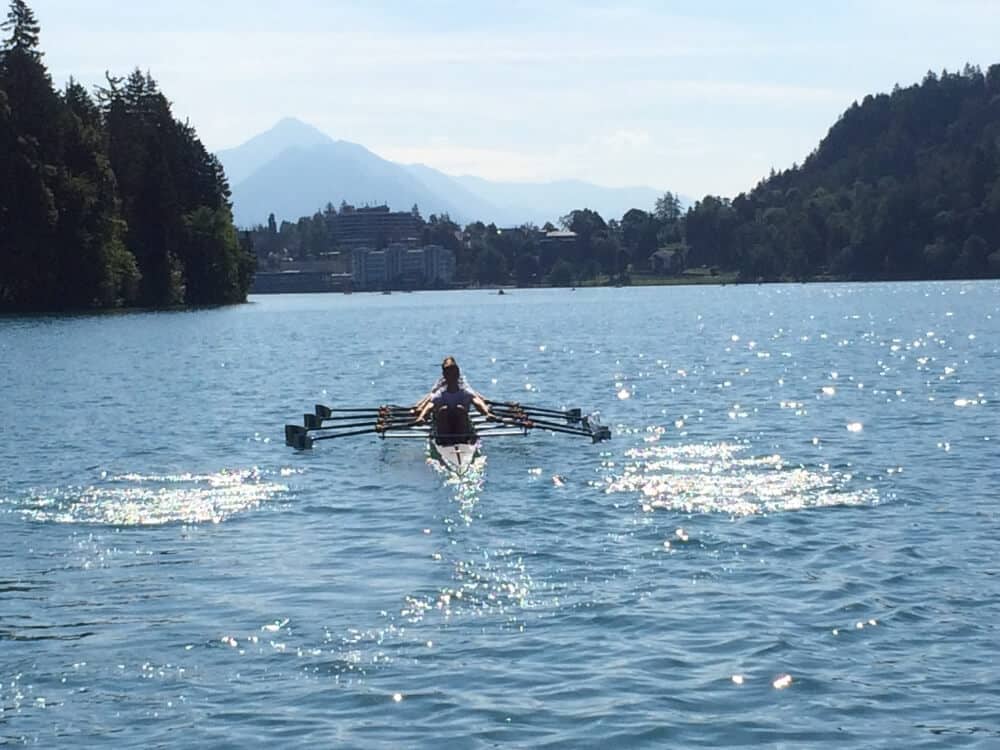
If you prefer more speed to your run along the river, then speak to local rowing club HVK Vukovar.
c) Danube river cruise
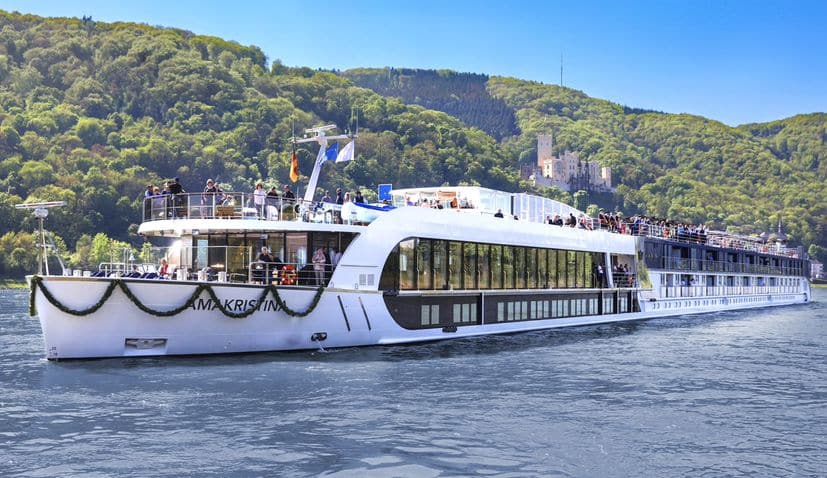
Not only is Vukovar usually a stop on several Danube luxury cruise routes, but also you can see many other countries on the trip.
d) Kayaking and canoeing
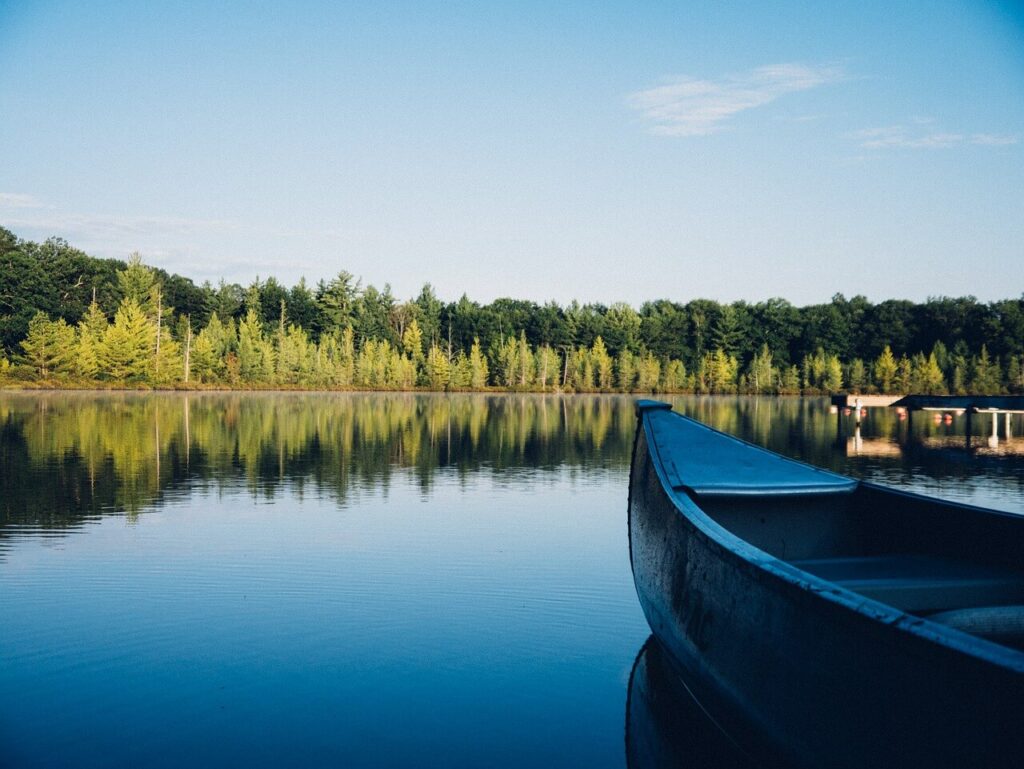
In truth, the very best way to get up close to the epic Danube is by kayak or canoe. If you want to rent one to explore the river, then look here.
e) Fishing on the Danube and the Vuka
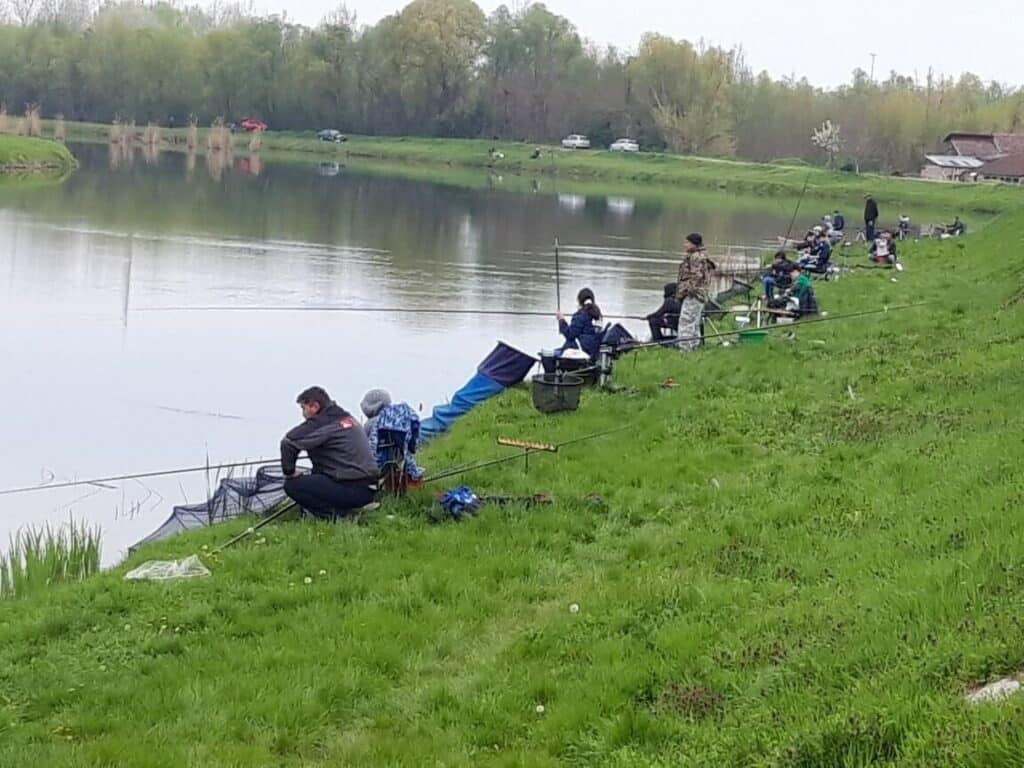
Markedly, fishermen love the rivers, channels and lakes of Vukovar. Indeed, there are 13 registered sports and fishing associations in the area where you can get your license. The waters are teeming with wild fish. Specifically, you can catch catfish, zander, pike, blue bream, common bream and monster carp here.
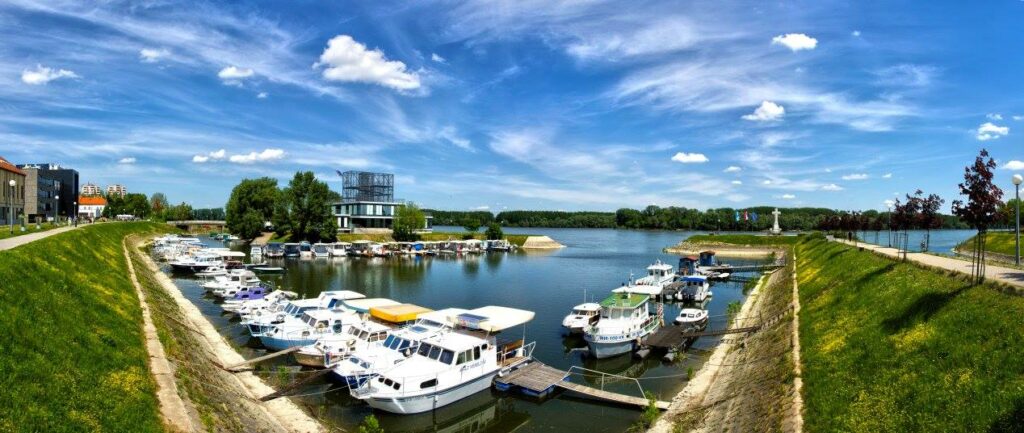
2) Marvel at incredible Vukovar street art
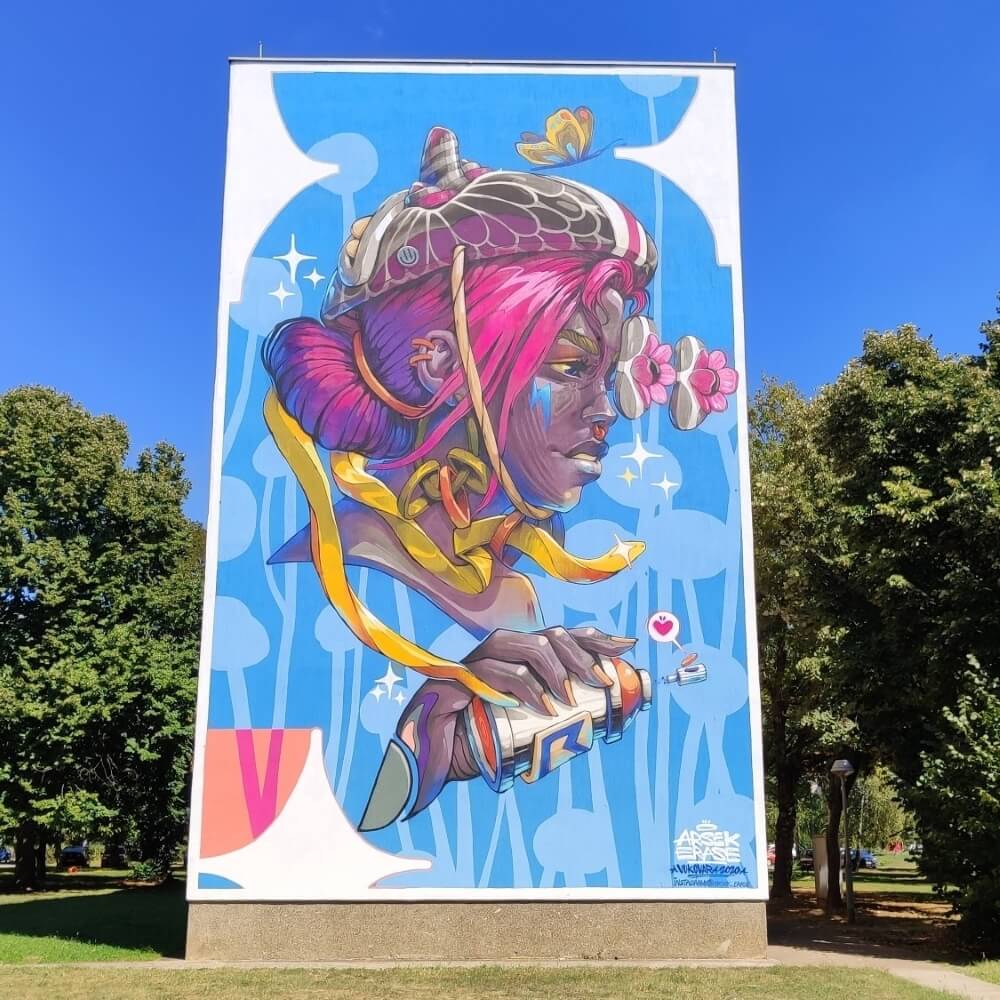
On account of serious damage to the city during the 1991 war, much of Vukovar was rebuilt. All things considered, the reconstruction was relatively quick. Subsequently, much of the town looked kind of new. Afterward, from 2016, the annual VukovART arrived to transform the town.
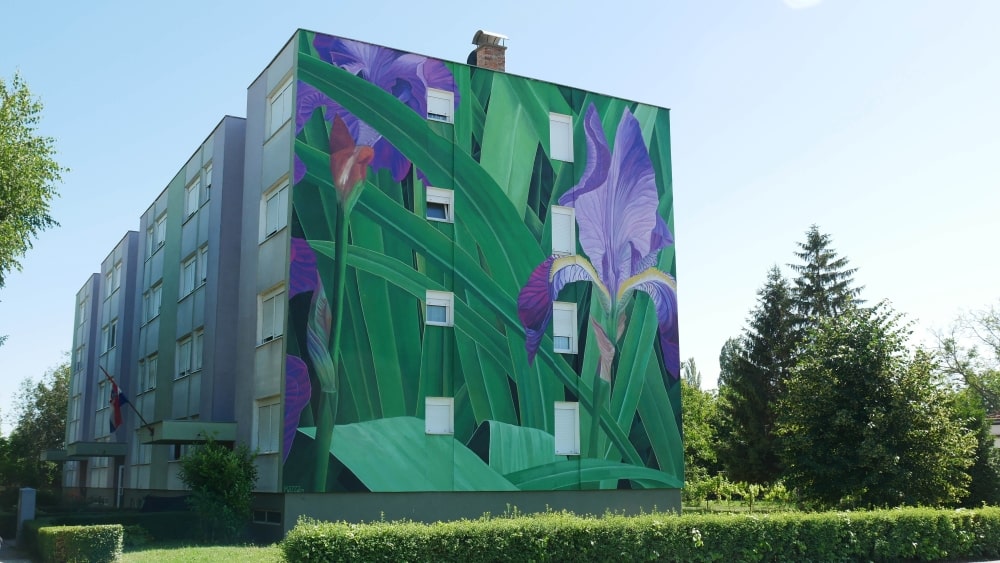
The annual Vukovar street art festival – VukovART
In the first place, works were temporary. Indeed, you could see 3D chalk works on town walkways only up until the first rains. But, in 2017, the first wall paintings arrived. Firstly, a painting by the river, underneath a town bridge. Simultaneously, town residents saw a sunflower emerging from a modern facade. Thereafter, from 2018, the festival’s incredible art became more permanent.
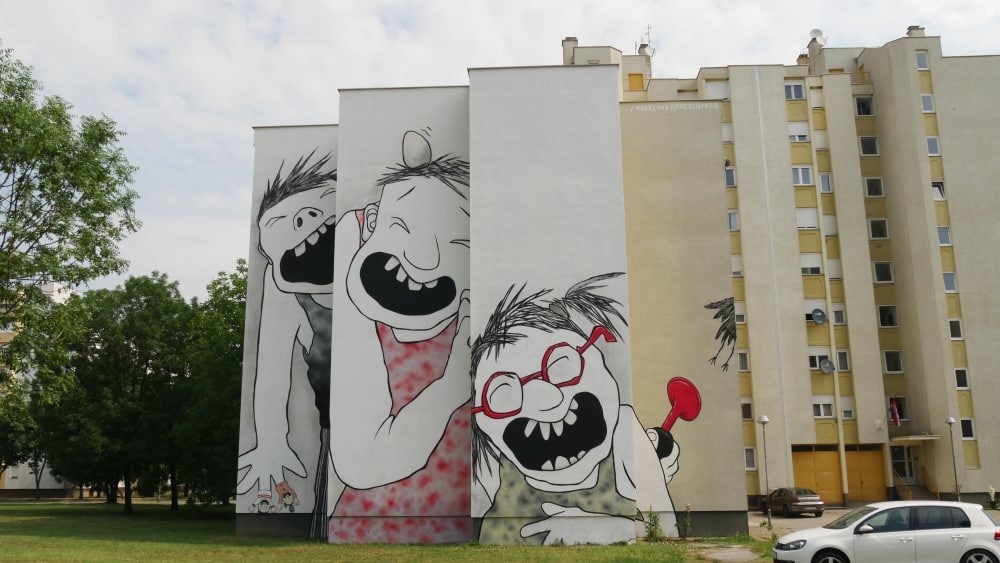
Not only have famous international artists since visited, but also you can still see their works. Indeed, today, Vukovar is a colourful, modern and forward-looking place because of them. If you want to see every piece of incredible art created at the festival, then look here.
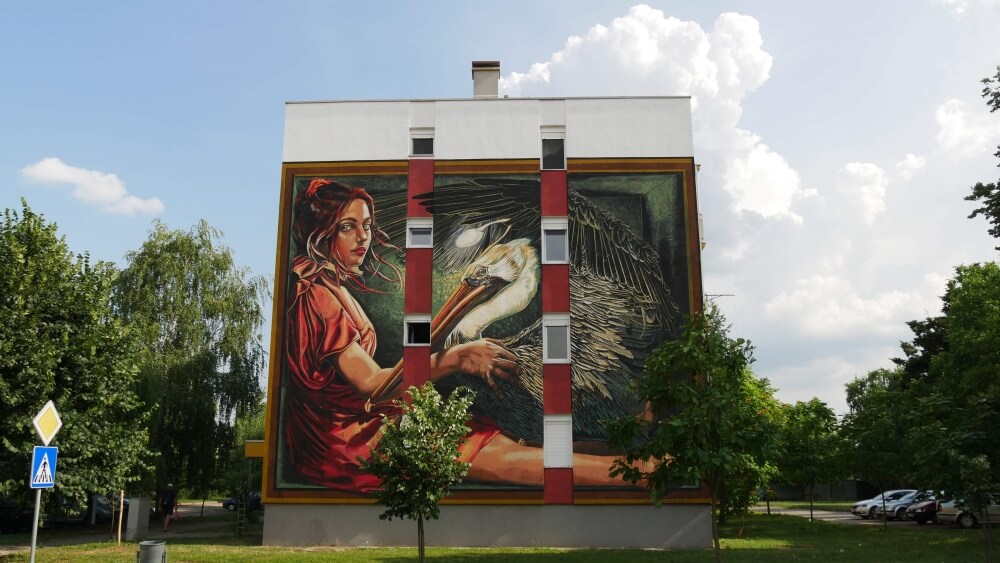
3) Enjoy the wonderful nature of Vukovar-Srijem
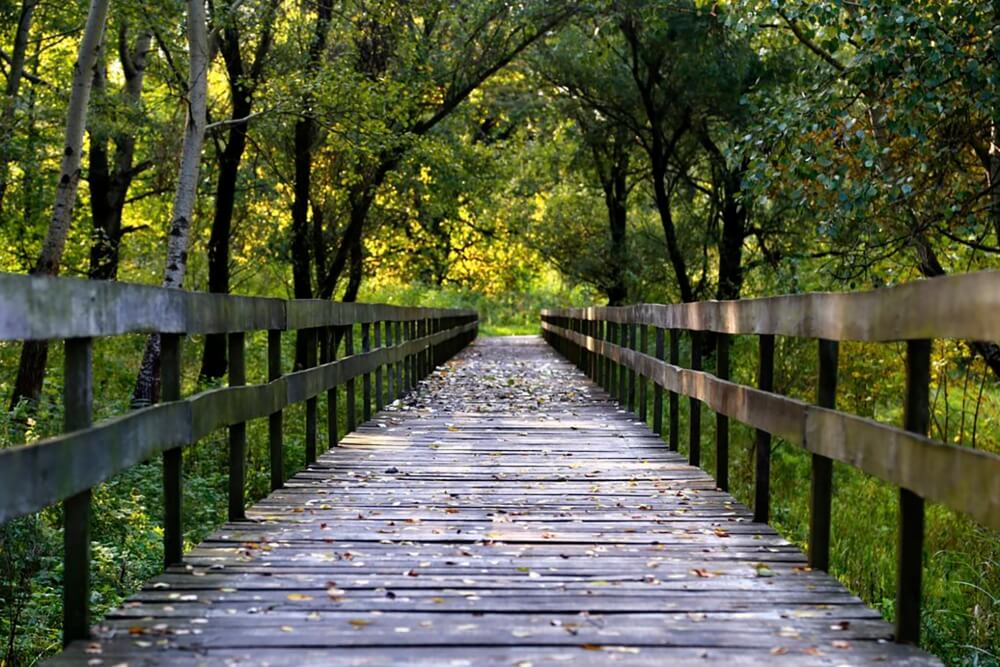
Bicycling in Vukovar-Srijem
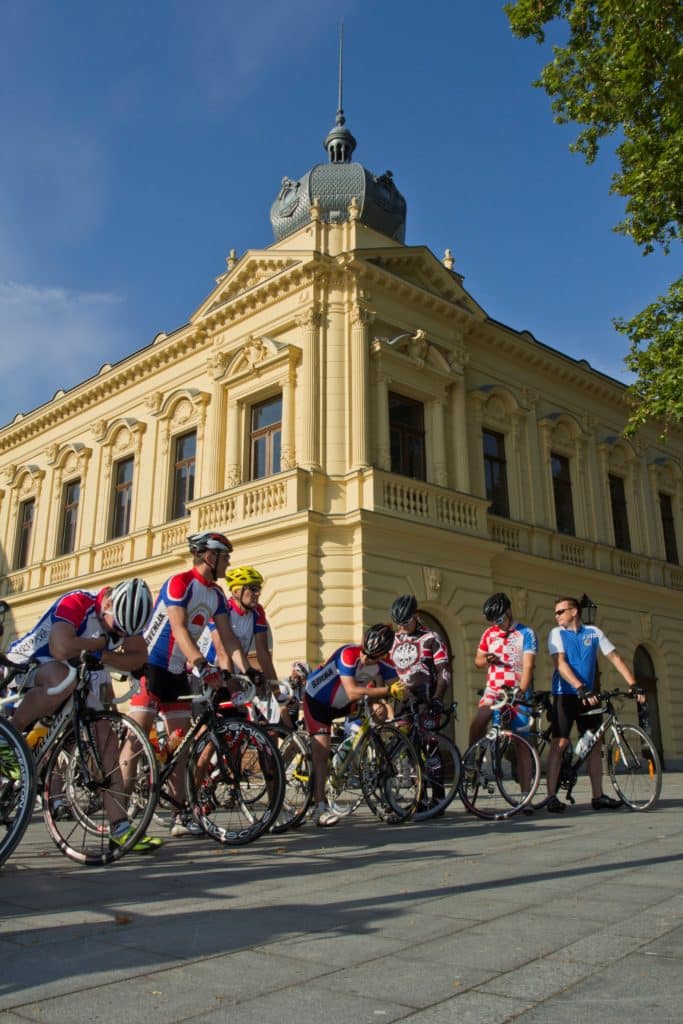
Without a doubt, Slavonia is a cycling paradise. Generally, the terrain is flat – no uphil struggles, just beautiful scenery. Indeed, Vukovar is on two established, popular Srijem bike trails. If you want to check them out, then look here.
Horseriding in Vukovar
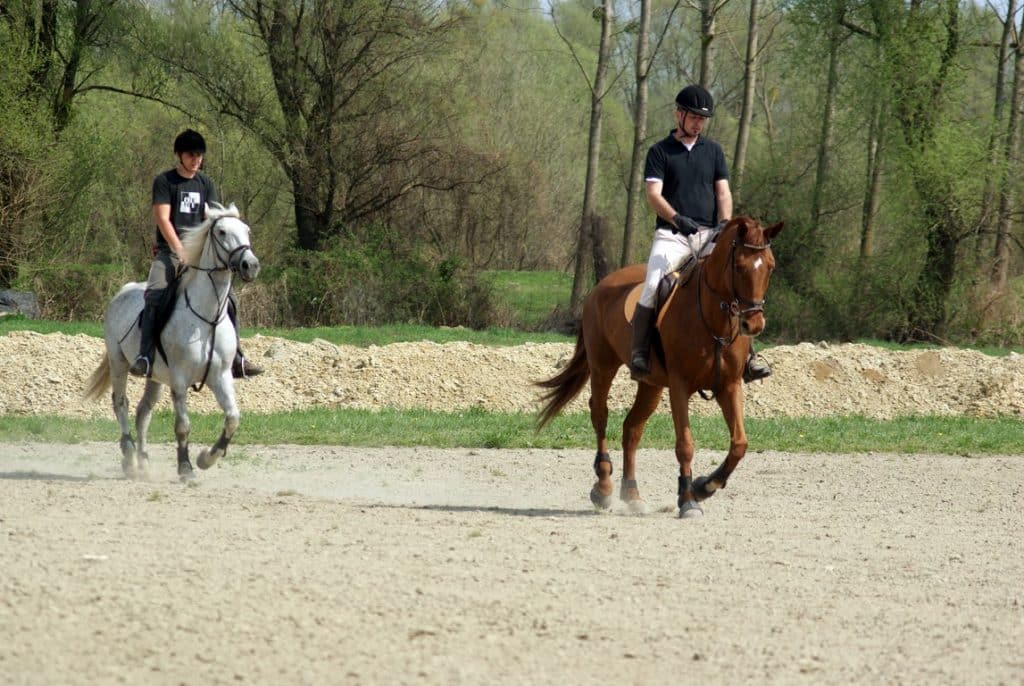
Both beginners and the experienced are catered for at OPG Dunavski Raj equestrian club.
The island of Vukovar

Both picnic parties and sun worshipping swimmers are welcomed on Vukovarska Ada, an island in the Danube. Notably, this 32,000 m2 sand bank has shading trees, volleyball court, clean beaches and you can camp overnight. Furthermore, it’s only 5 minutes by boat from the city centre.
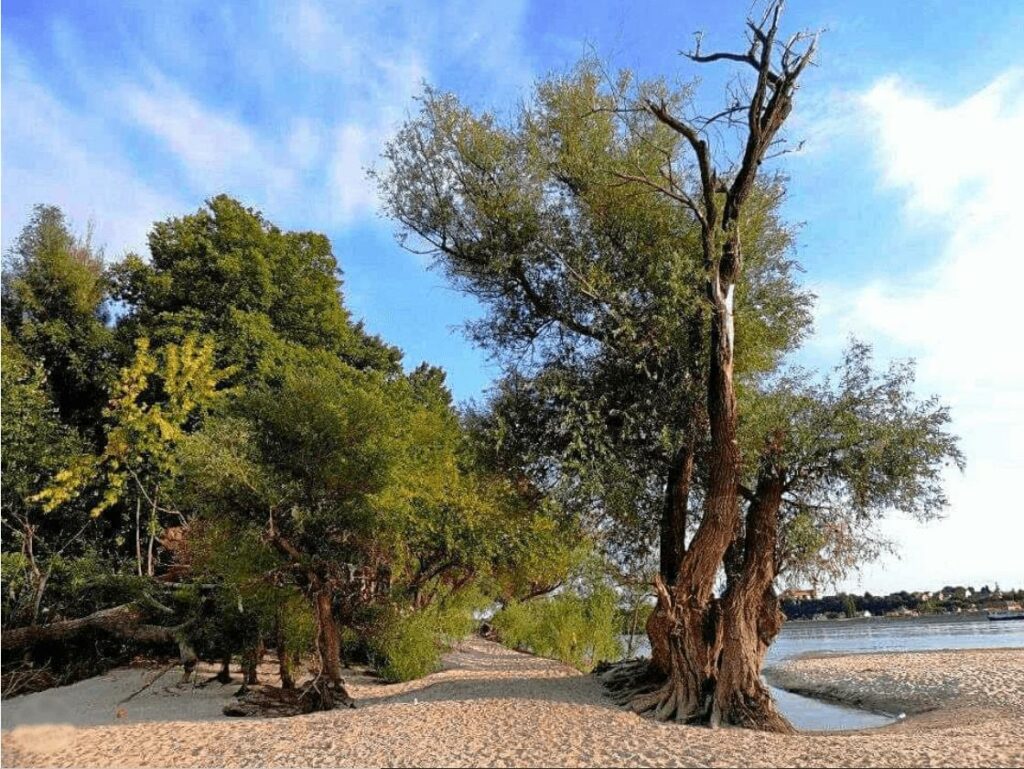
4) Discover local traditions: Gastronomy, living in harmony with nature, arts & crafts
If you want to get to the true heart of traditional Slavonia, then leave the city. Specifically, OPGs are small, family-run farms, producers and enterprises. Furthermore, some with the best traditional practices open their doors to tourists. If you visit anywhere in continental Croatia, then visiting OPGs is one of the best things to do. Generally, any OPG visit ensures you get up close to beautiful nature. Furthermore, you’ll be helping preserve a traditional way of life and the landscape it nurtures. Not only will you get to try some amazing things, but also see how they’re made.
Izletište – Gondola, Sotin
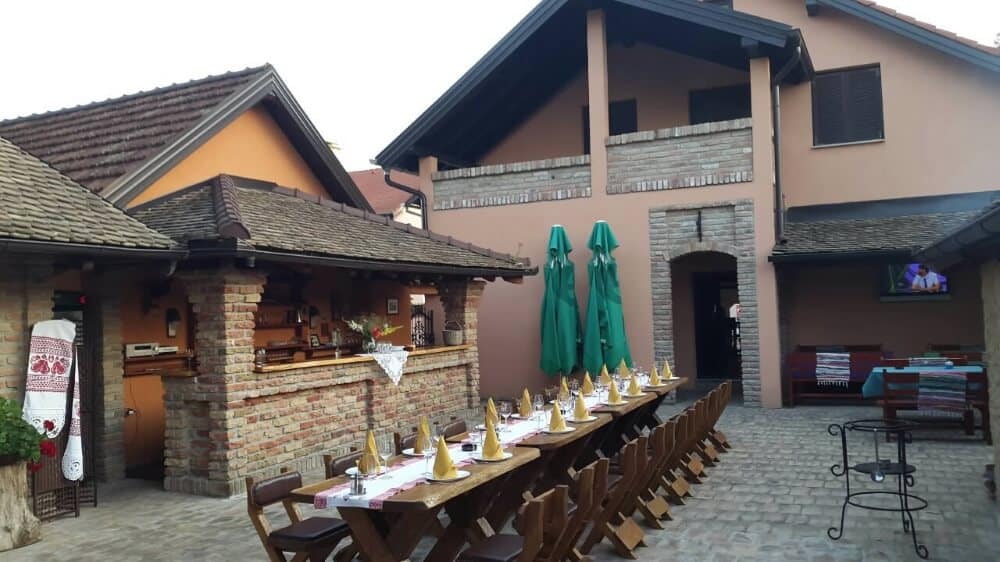
Chiefly, Izletište – Gondola‘s offer is the traditional cooking methods and tastes of Slavonia and Syrmia. If you’re looking for paprika-rich stews or whole roast pig, then come here. However, the OPG also has accommodation. Not only is the location peaceful and secluded, but also well connected to Vukovar.
Dunavski raj
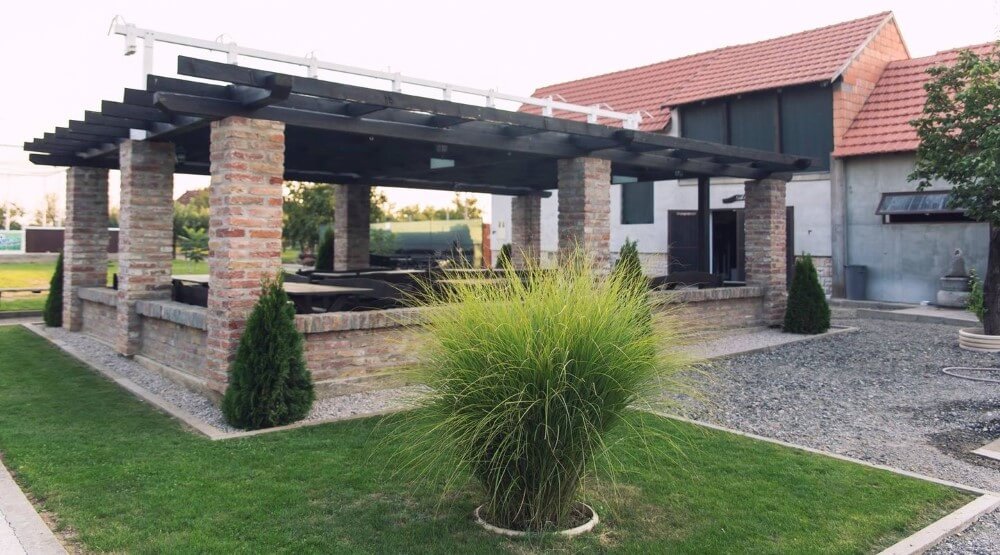
As has been noted, OPG Dunavski raj run an equestrian club. But, they also have a gastro offer too. Furthermore, tables sit outdoors in a beautiful garden.
Acin Salaš
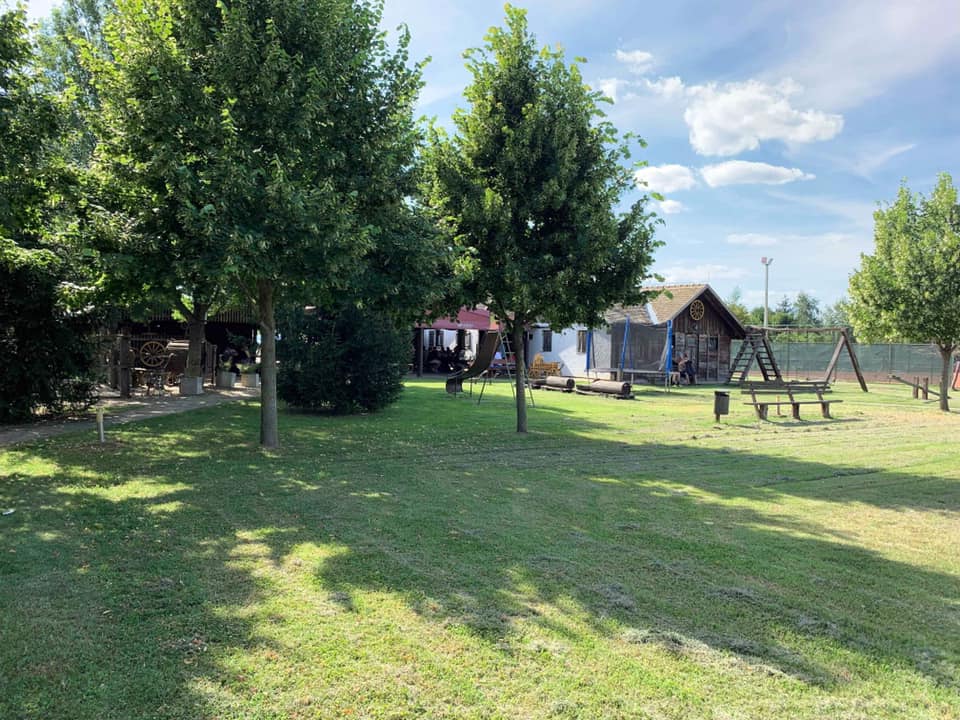
Notably, Acin Salaš in nearby Tordinci is a real farm, with horses, pigs and epic grounds. Not only do they offer rooms and food, but also sports and activity areas.
If you want to discover more OPGs in the area, then look here.
5) Vukovar museums and Vukovar water tower
a) City of Vukovar Museum – Eltz castle
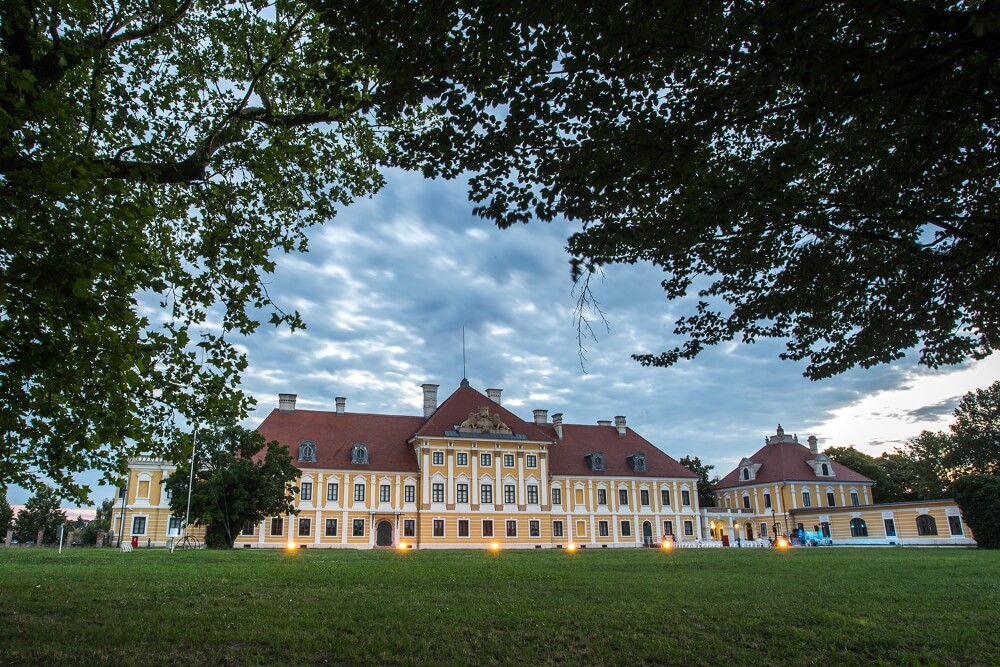
Actually, one of Germany’s most famous, spectacular and oldest castles is called Eltz castle. However, Vukovar’s Eltz castle (or Elty manor) is clearly something other. The two are connected by the same Eltz family who built them. In fact, Eltz family descendants still live in the German castle, just like their ancestors of the 12th Century.
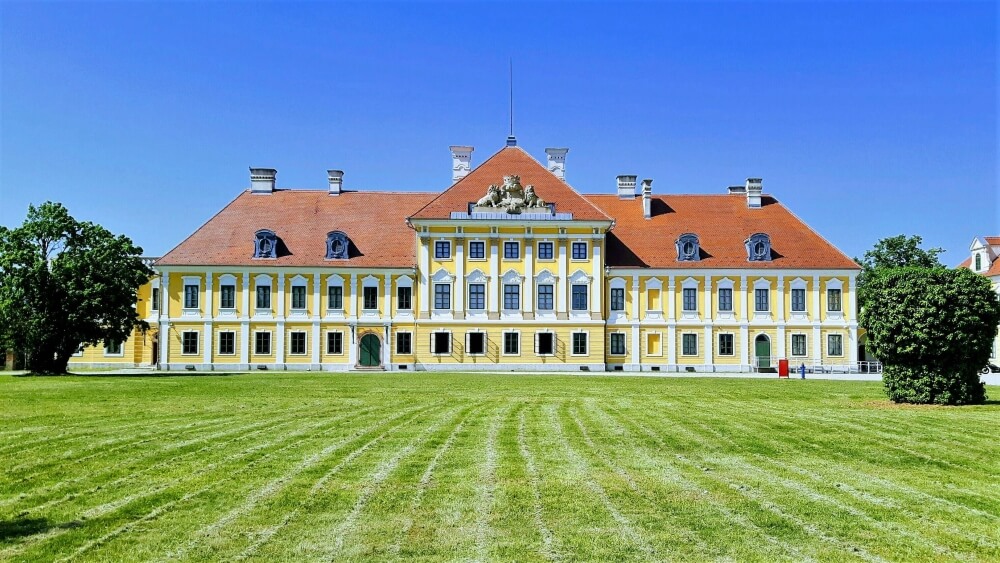
Not only did the family own land in Germany, but also here. In fact, this section of the Danube was by far their most significant territory outside Germany. Subsequently, Eltz Castle in Vukovar became their main regional residence until 1945. Thereafter, communists expelled the family.

The Vukovar City Museum
Eventually, since 1968, the castle houses Vukovar City Museum. In truth, this is one of the most significant museums in Pannonia. Not only does it highlight all the peoples who’ve lived here, but also contains many valuable exhibits.
b) Museum of Vučedol culture
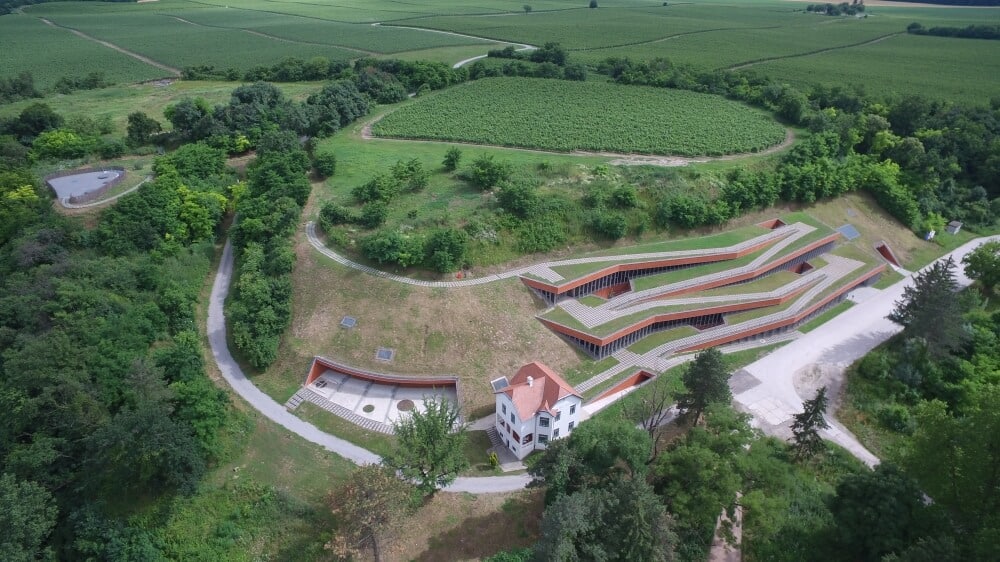
Not only is this museum an architectural masterpiece, but also it’s one of Croatia’s most popular. Furthermore, it is the best place for you to learn about the fascinating Vučedol culture. But, more about that later…
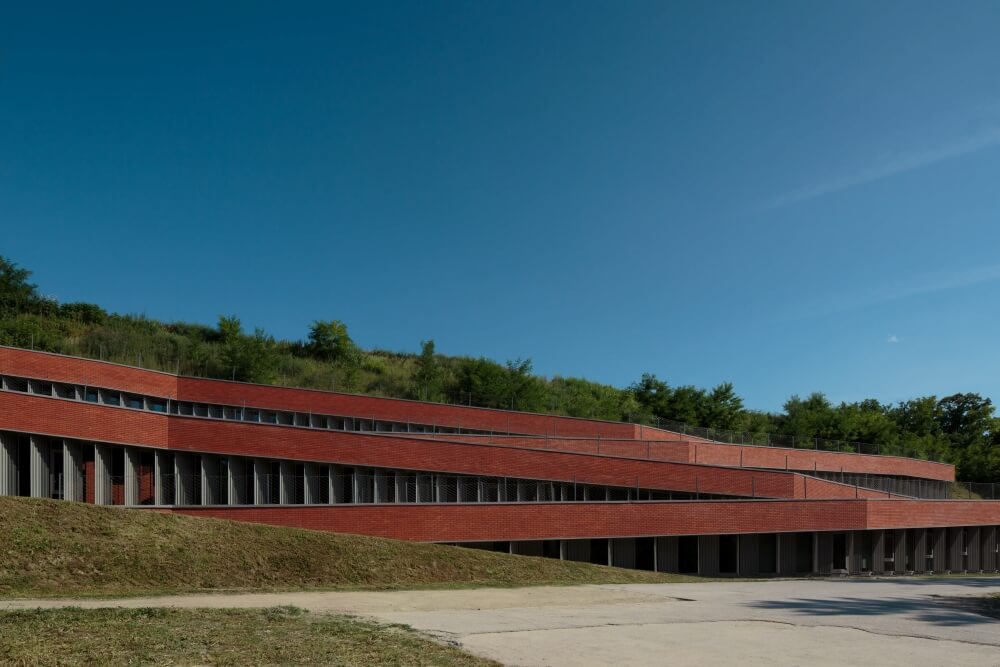
c) Franciscan monastery and St Philip and Jacob Church
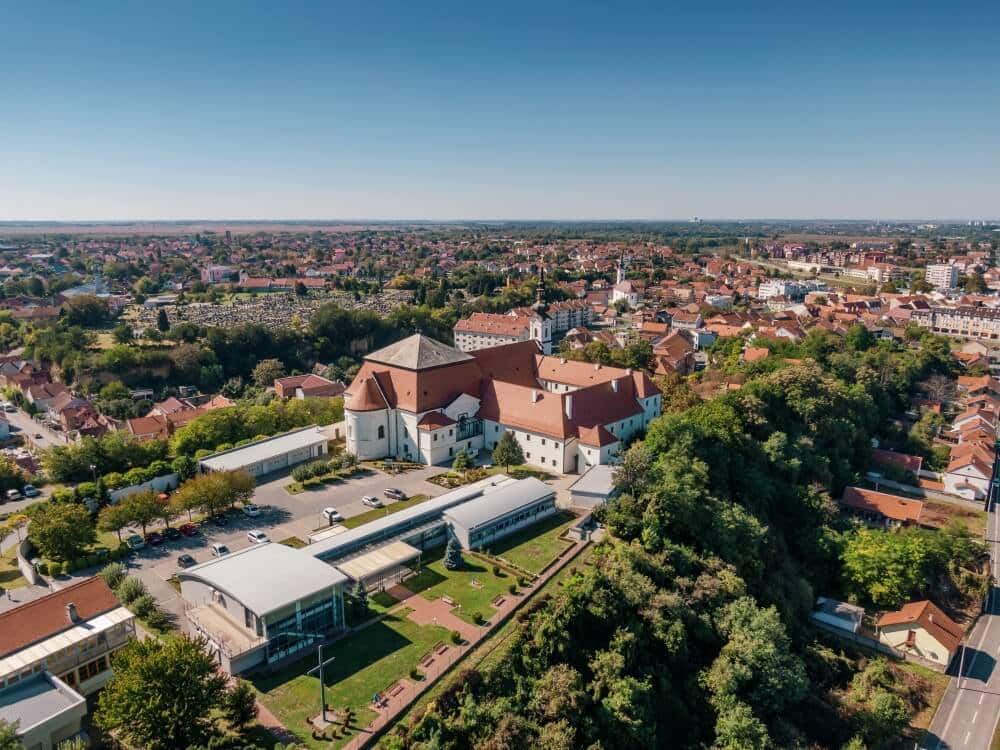
Both a beautifully restored church and monastery, Franciscan Museum Vukovar has a library and interior you must see.
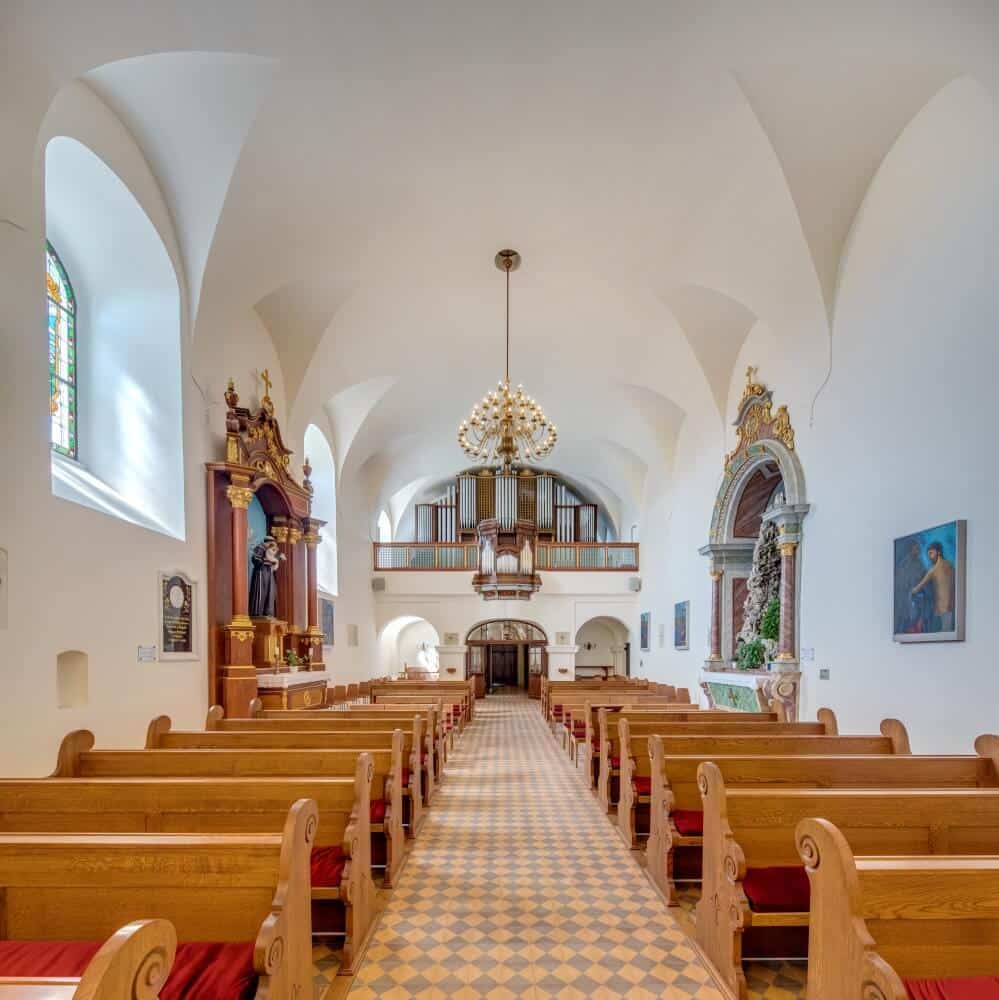
d) Vukovar Water Tower and war memorial visits
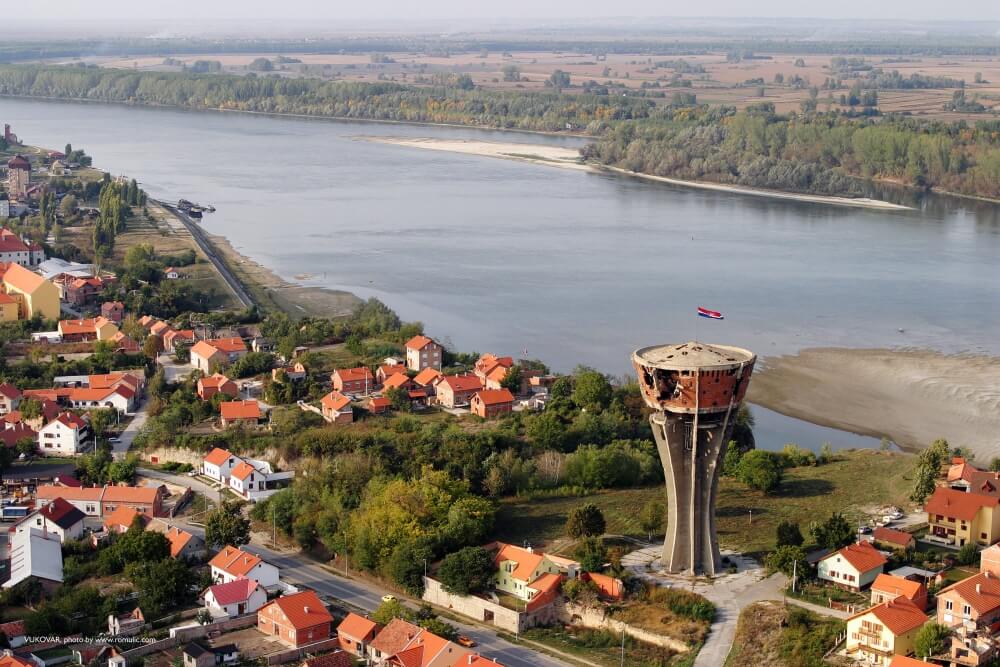
1991 War Memorial Visitation in Vukovar
Important to realize, while war memorial visitation isn’t for everyone, it’s why some come to Vukovar. Certainly, this isn’t regular tourism; it’s a much more somber affair. But, it is the reason some visit. Not only do Croatians come, but also those interested in the 1991 war in Vukovar.
Vukovar Water Tower
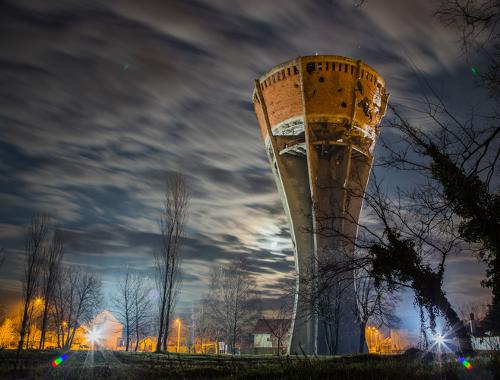
Together with the Danube, Vukovar Water Tower is the most iconic modern symbol of the city. In detail, it was built in 1968, stands 50 metres high and has a capacity of 2,200 cubic metres. Actually, at the time it was built, it was one of the largest water towers in Europe. Previously, before the war in 1991, you could visit its restaurant. Furthermore, guests got incredible views over the town, river and Vukovar-Srijem County. During the war, it was hit with more than 600 missiles. Thereafter, it became a symbol of resistance, then one of remembrance.
During recent years, the city have worked to preserve the tower. Subsequently, you can now go inside its memorial room. Additionally, these are the other memorial locations you can visit dedicated to the war in Vukovar in 1991.
The Vukovar hospital 1991
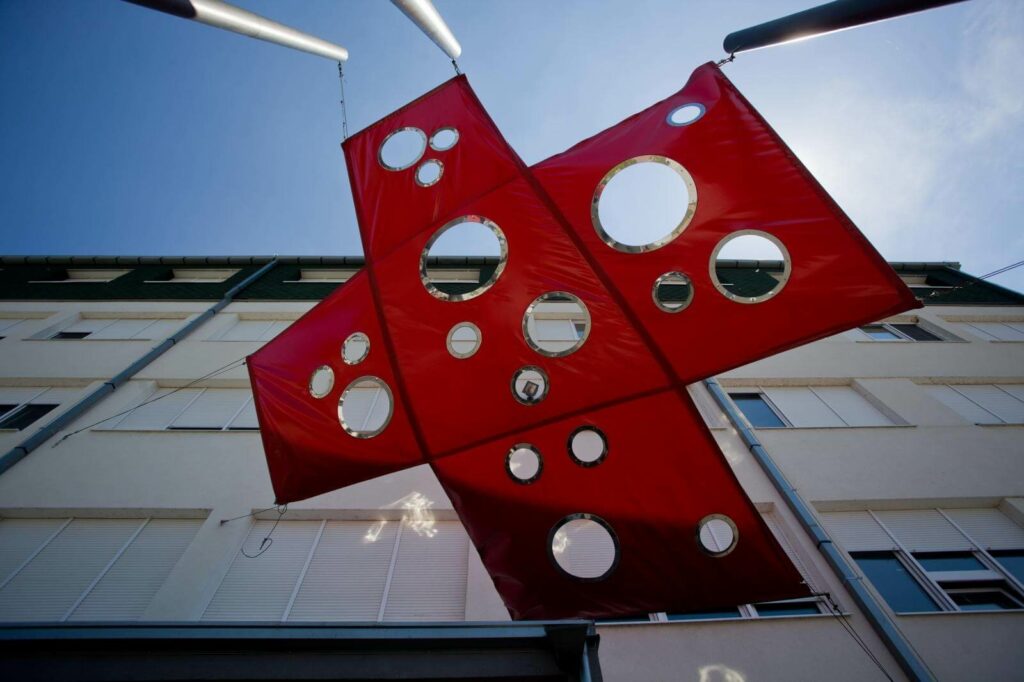
Memorial site of the Ovčara mass grave
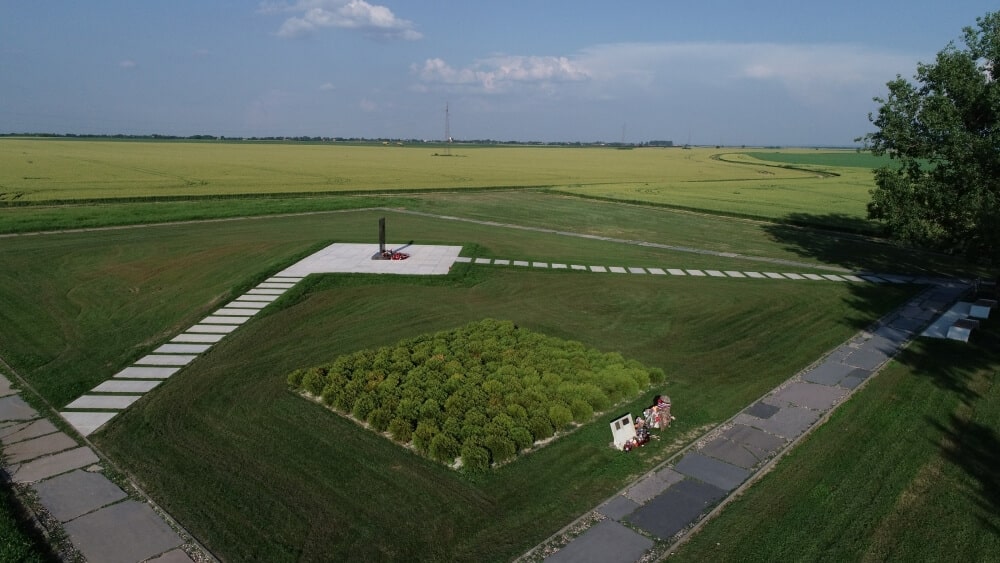
Ovčara Memorial Hall
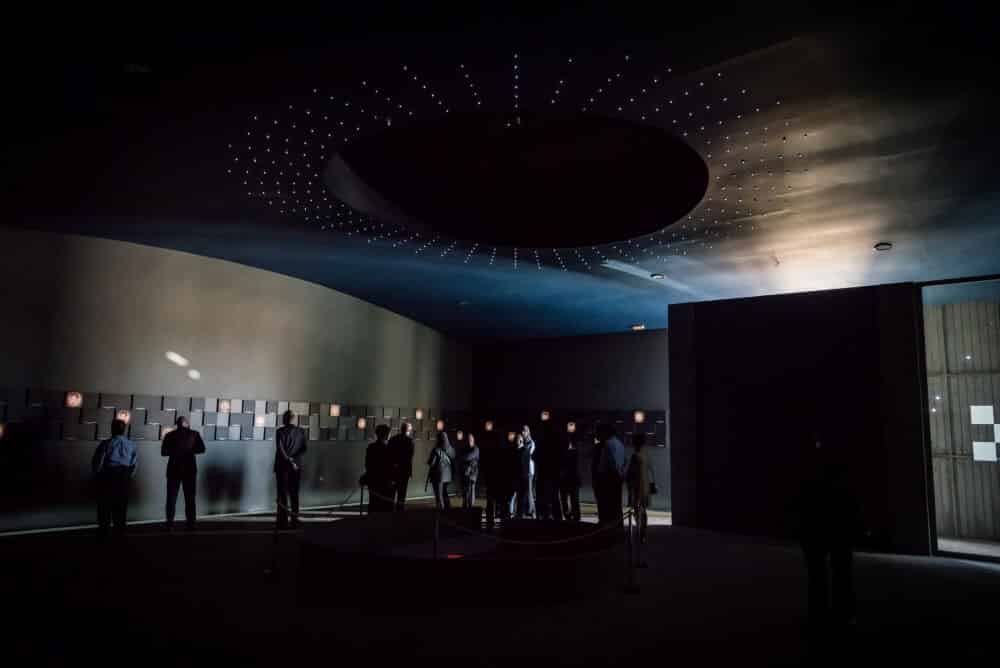
Memorial Cemetery of Homeland War Victims
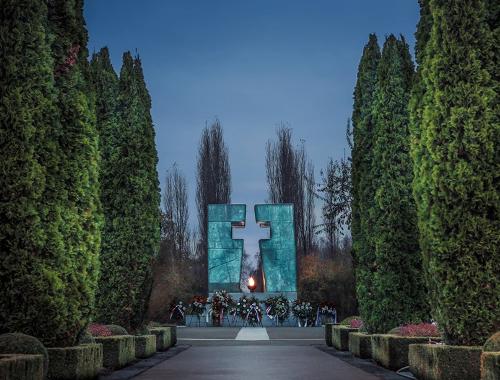
The Homeland War Memorial Centre
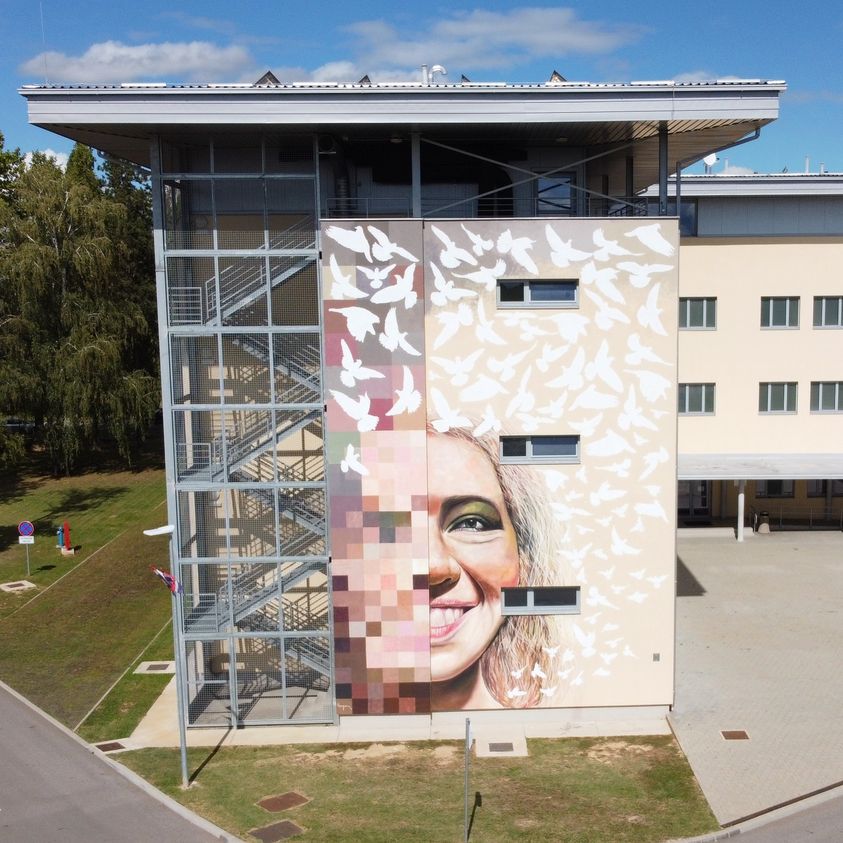
Trpinjska Cesta Croatian Defenders Memorial Hall
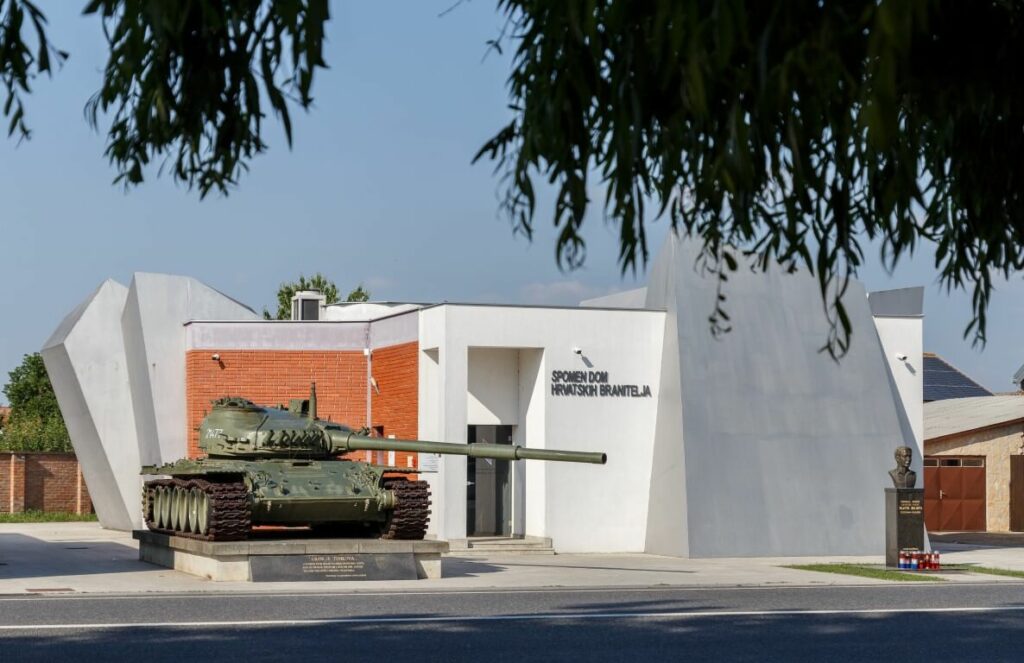
The central cross at the Vuka river’s confluence into the Danube
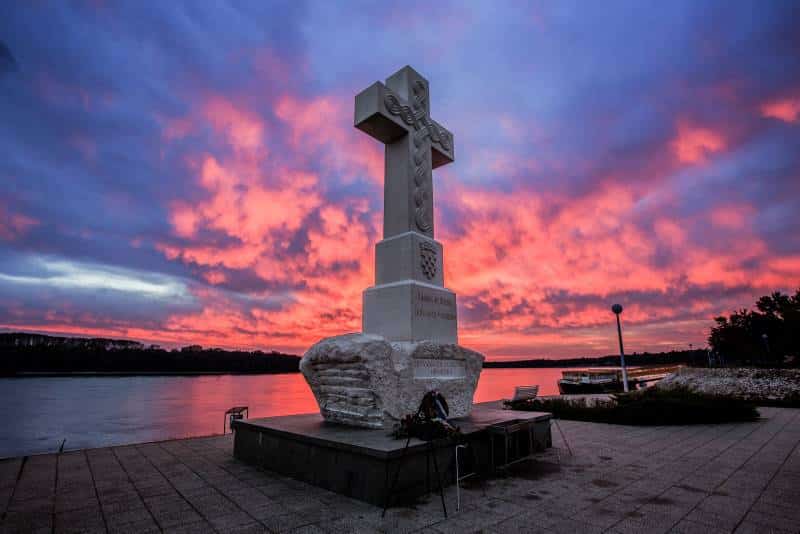
Where to stay in Vukovar? Vukovar hotels
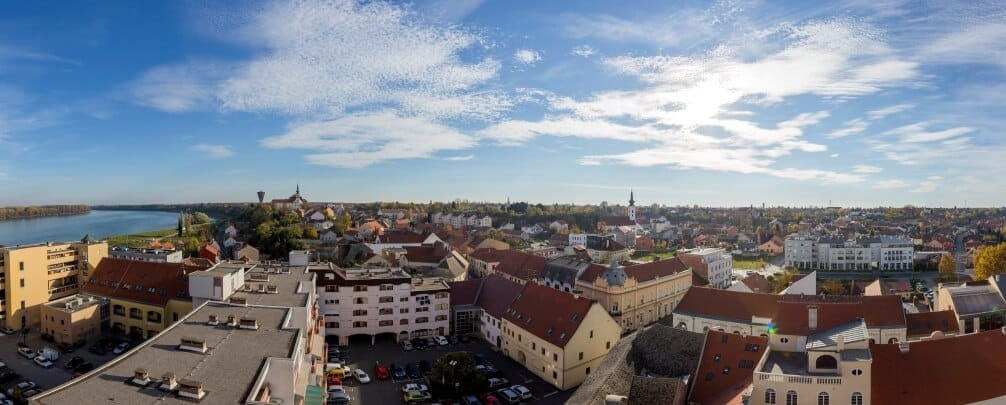
Both famous for events and popular with young people, Vukovar is ready to accommodate all. Consequently, there are no less than 3 Vukovar hostel options. If you want to see more about them, then look here. Also, you can check out a wide range of rooms and apartments here.
Hotels Vukovar
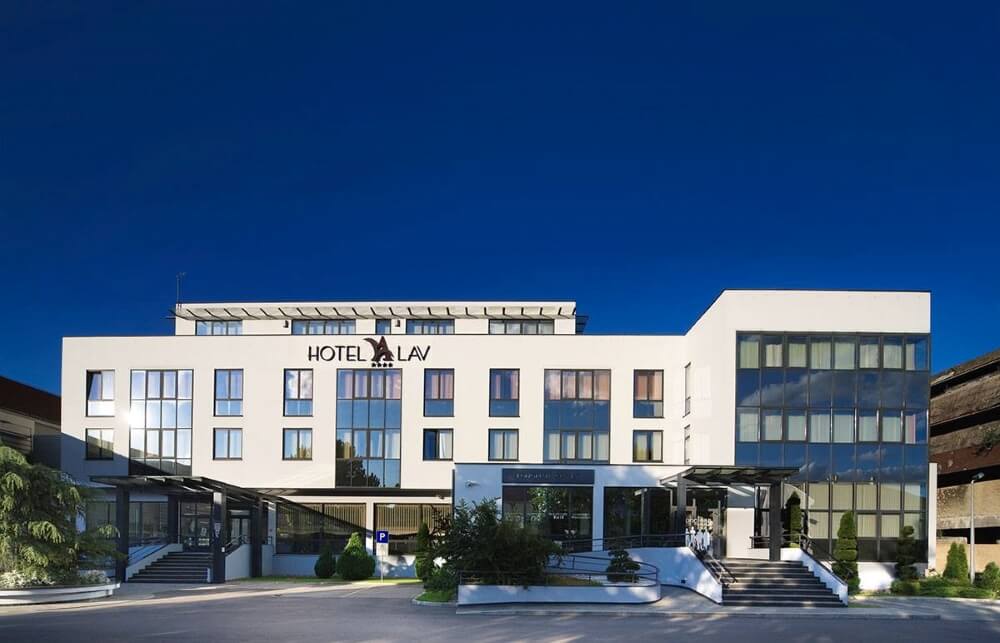
At the present time, the only bona fide Vukovar hotel is Hotel Lav.
Holiday Homes
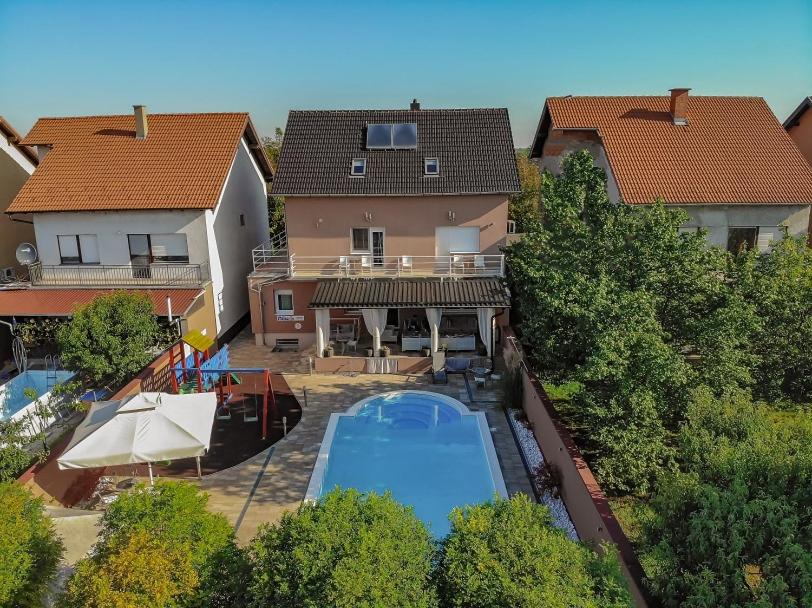
If you want to see a fuller list of Vukovar holiday homes to rent, then look here.
New
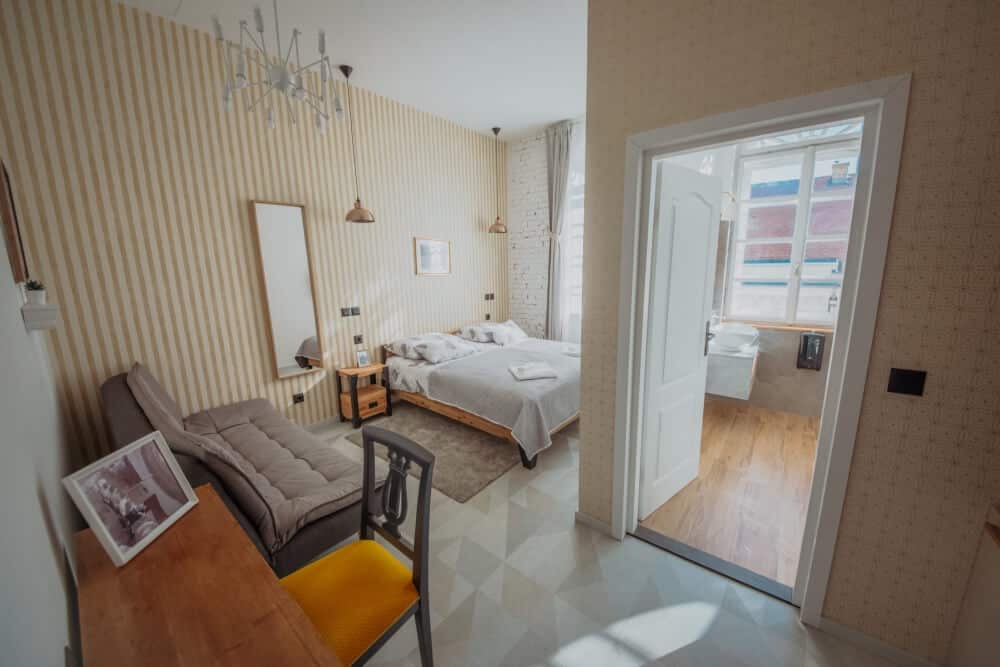
Not only do Domestic House Lola have sharply designed rooms, but also a rated restaurant and bar.
Where to eat in Vukovar? Vukovar restaurants
Of course, there are many more Vukovar restaurants you can visit than what follows. Indeed, you can get great pizza in Vukovar. In fact, you can even go to a Mexican restaurant in Vukovar and get pizza (and Balkan grill). But, here we’re highlighting just a small selection. In particular, the following offer traditional, regional food.
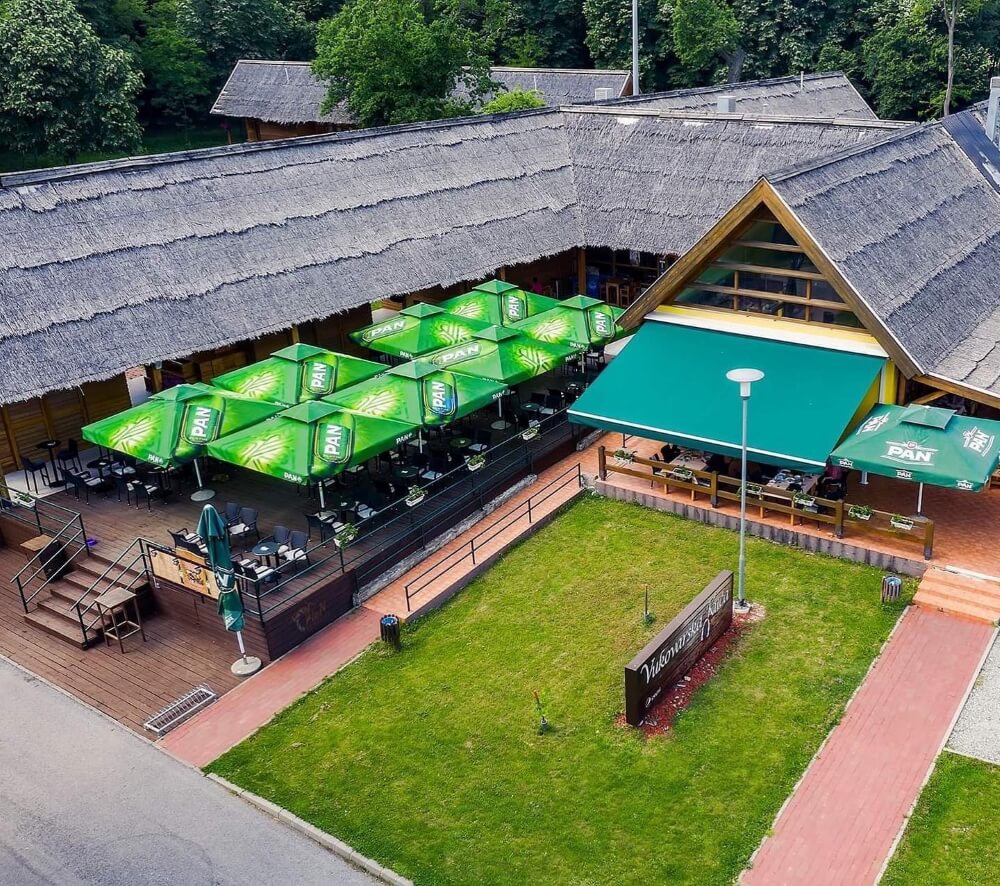
Without doubt, one of the best places for regional foods, at Vukovarska Kuća you’re surrounded by greenery. Also, you can stay overnight here.
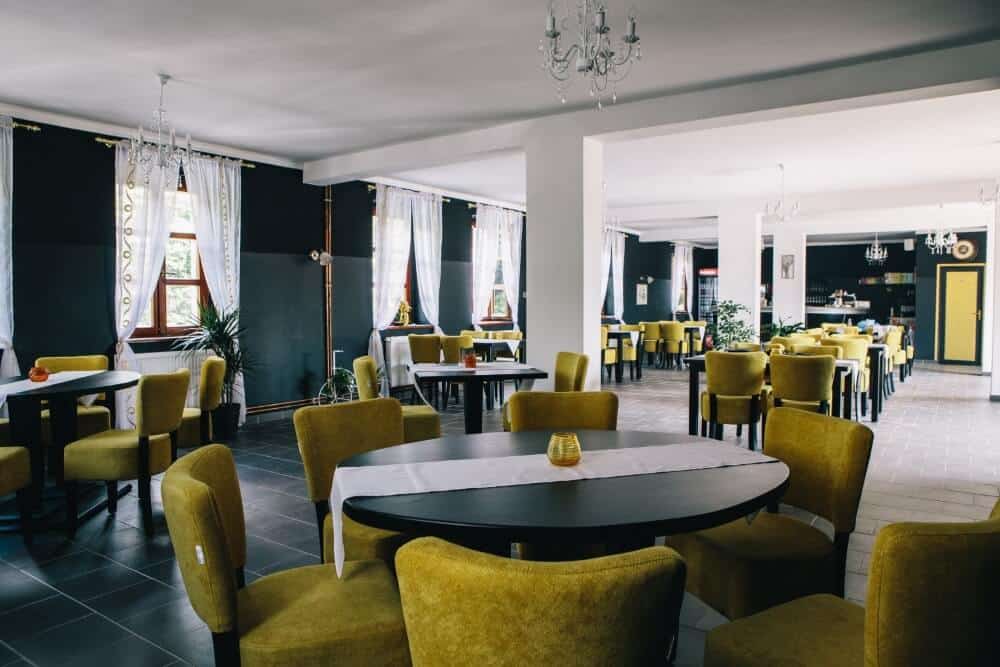
Actually, Great Gatsby isn’t nearly so formal as its superb design and well-presented food suggests.
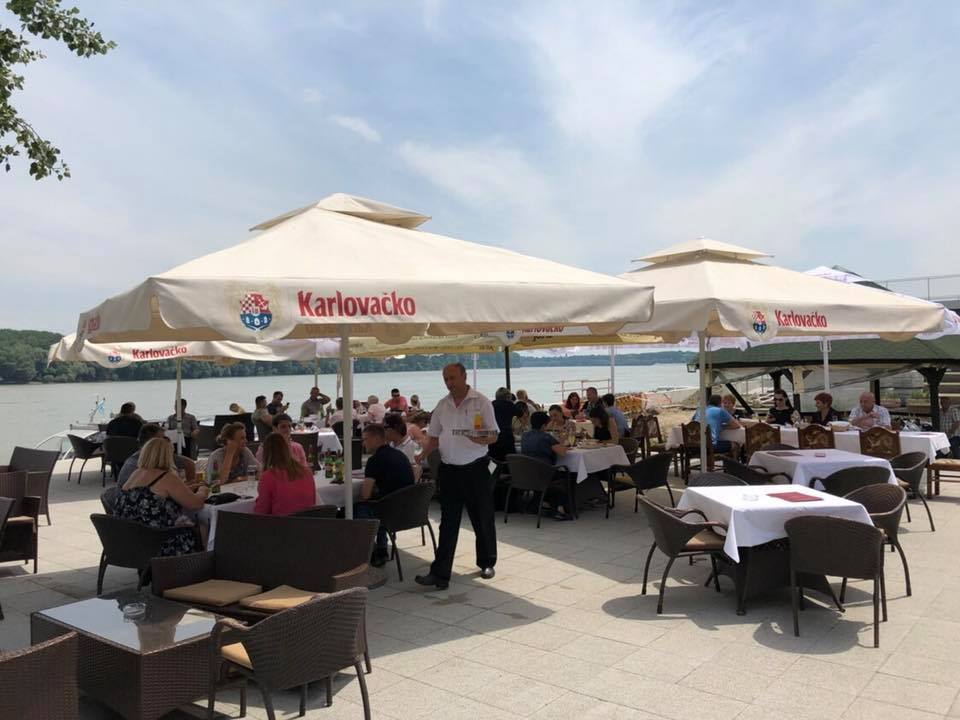
If you want Croatian classics or regional favourites, then try Vrške.
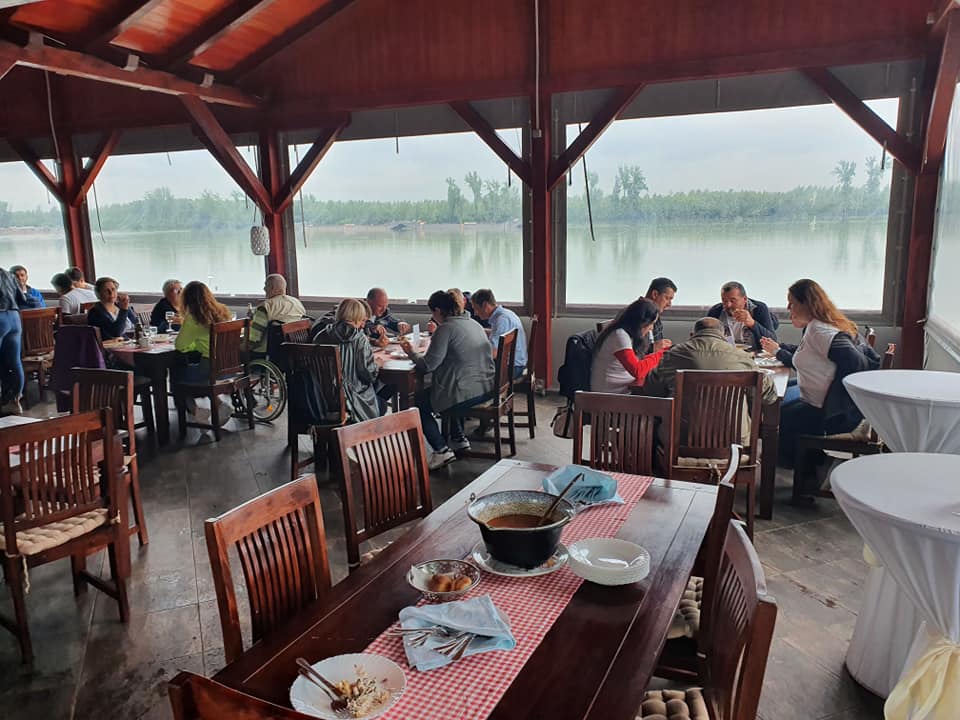
Not only do Mornar have grilled meats and fish, but also local specialties, by the river.
Things you (maybe) didn’t know about the town
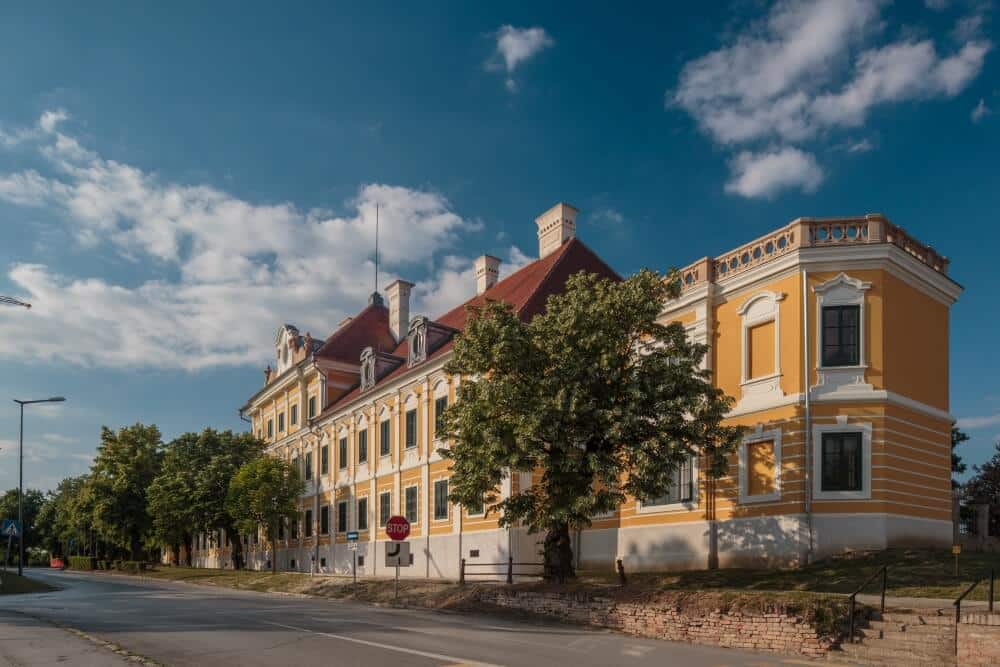
Syrmia (Sirmium, Srijem, Srem)
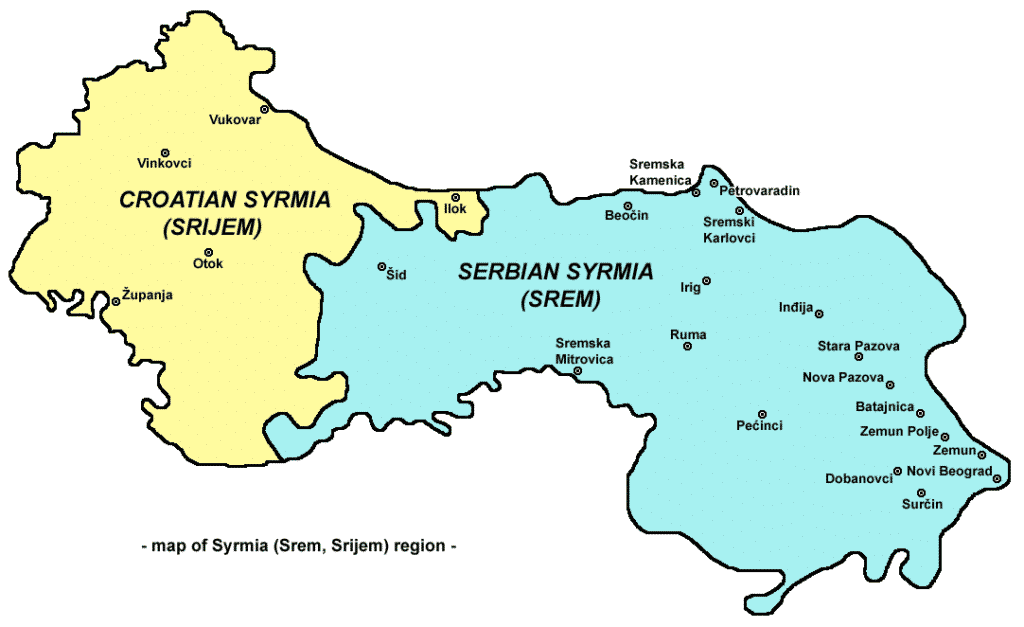
As has been noted, Vukovar is the county seat of Vukovar-Srijem. However, what you might not know is that Srijem (Syrmia) is derived from the ancient city of Sirmium. Actually, this city we today call Sremska Mitrovica.
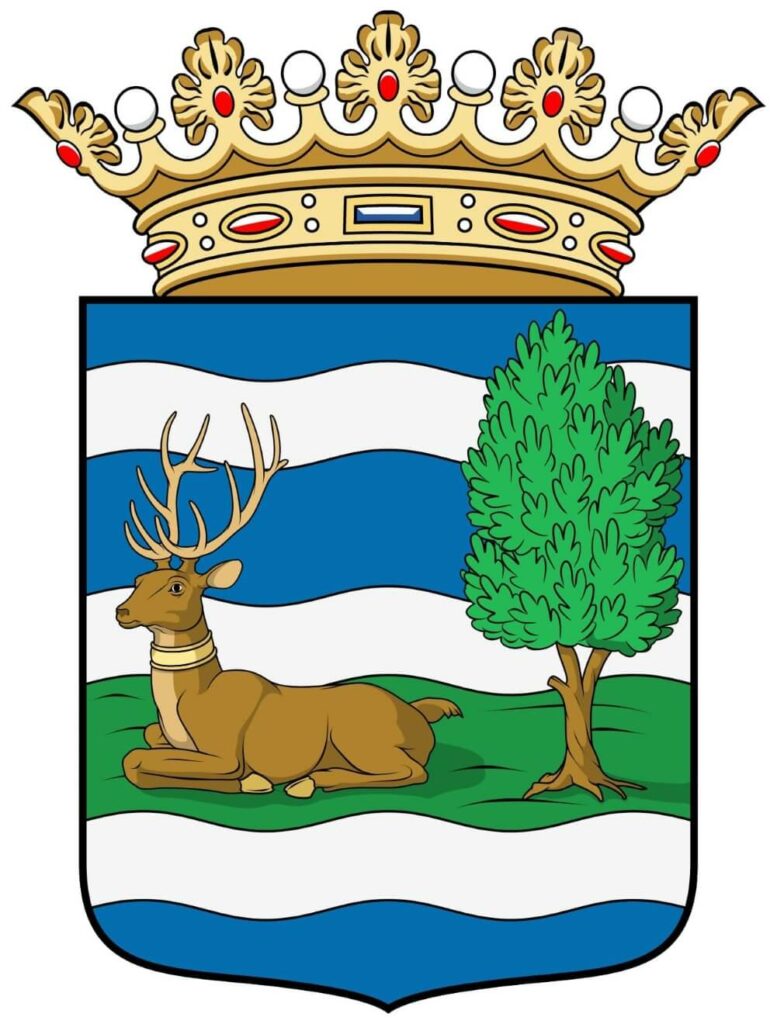
The Romans
Conquering the original settlement in the first century BC, the Romans went about establishing a major city. Subsequently, it became the economic and political capital of the major province of Pannonia. In fact, in 294, Sirmium became one of the four capital cities of the Roman Empire. Specifically, the others were Trier, Milan and Thessaloniki – the city of Rome was merely a ceremonial capital. Notably, 10 Roman Emperors came from the city region.
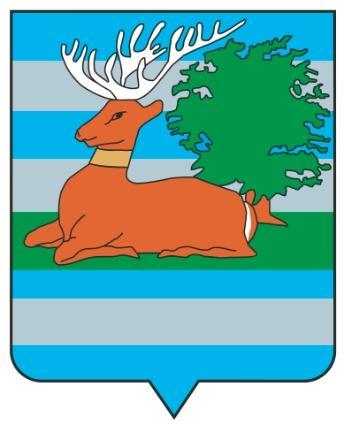
Notwithstanding successive ownership by Avars, Bulgars, Hungarians, the Ottomans and Austrians, it kept its name. Indeed, although now split between two different countries, the city region is still call Srijem/Srem.
The Vučedol culture belongs here
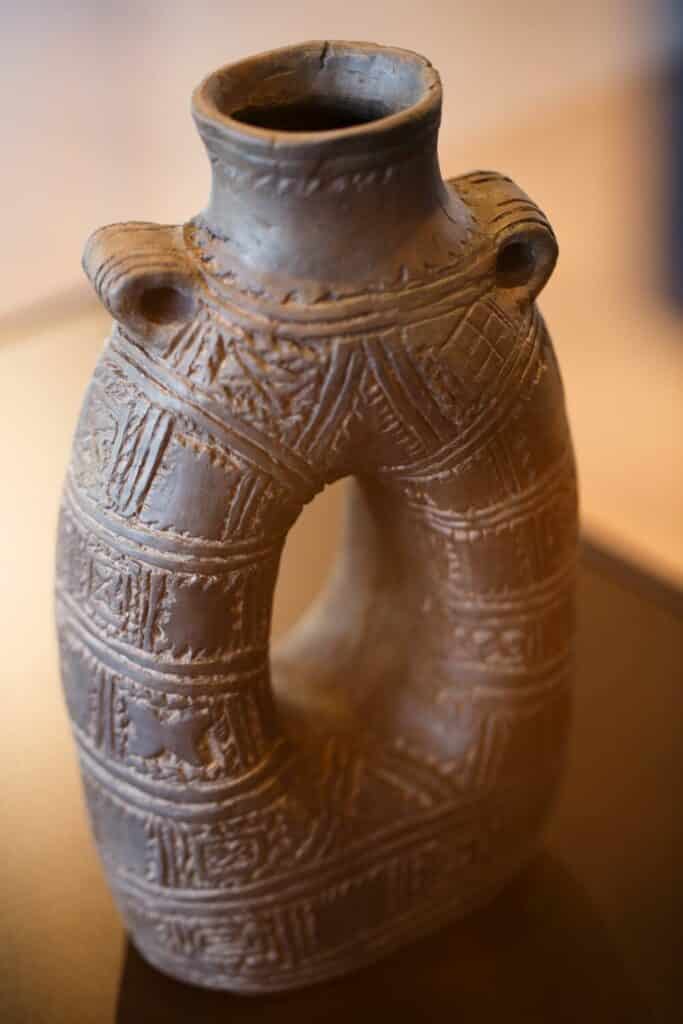
Generally, unless you have a specific interest, you probably won’t know about Vučedol culture. But, after visiting the Museum of Vučedol culture in Vukovar, you’ll be an expert. Inside, you’ll learn about a people and a significant stage in human development. Not only will you discover that culture originates right here, but also of its influence and advances.
What is the Vučedol culture?
Flourishing between 3000 and 2200 BC, Vučedol culture displays several leaps in how people lived. Firstly, there’s the start of making tools from copper using moulds. Secondly, there’s the keeping of livestock as a food source. Also, a new style of richly decorating pottery.
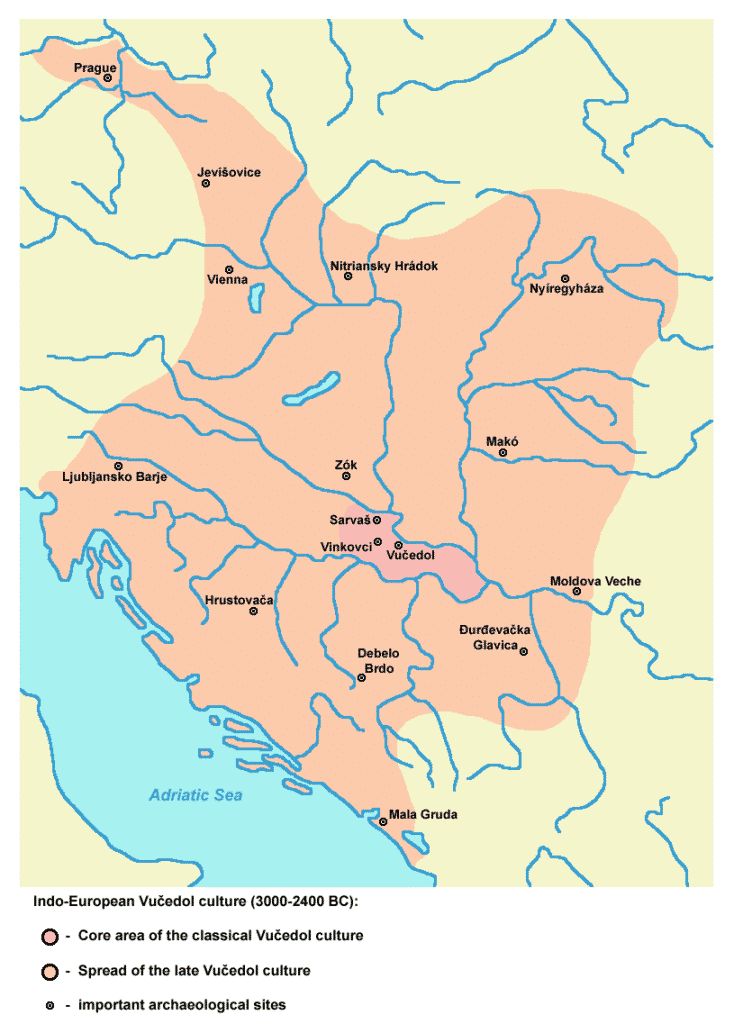
Although, the museum will teach you how this culture spread across much of south-east Europe, it began here. In fact, we know this because of the Vučedol archaeological site, six kilometers from Vukovar. Specifically, it reveals a settlement once home to about 3,000 people. Consequently, making it one of the largest and most important European centres of its time.
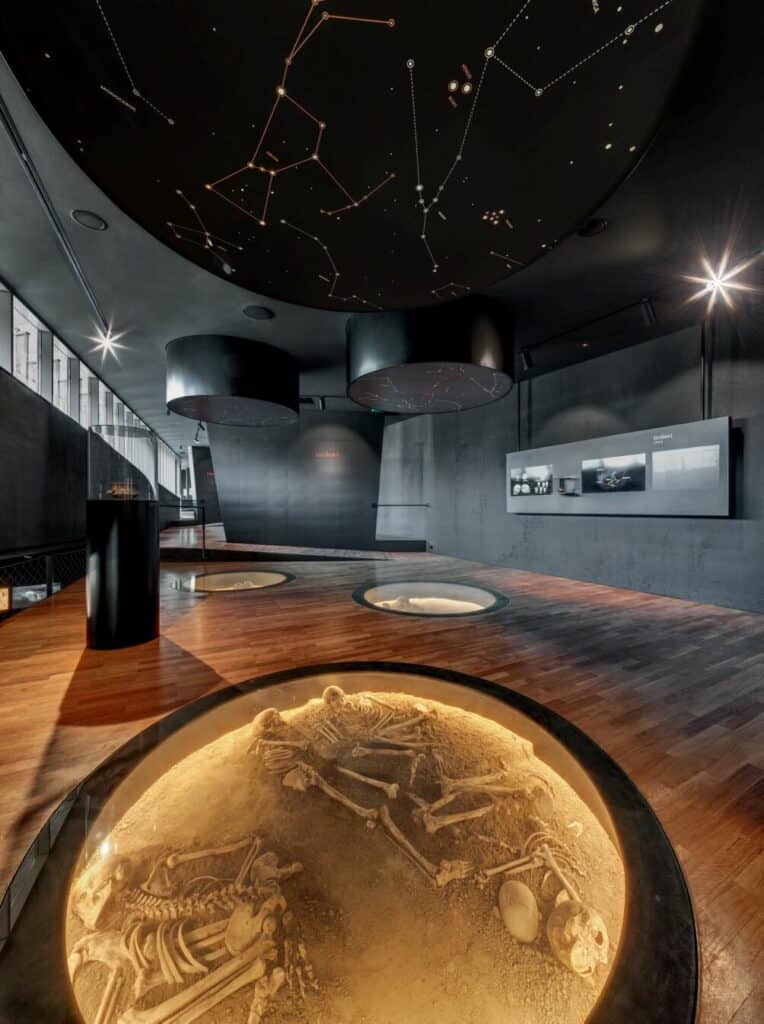
Among the many fascinating exhibits you’ll see in the museum are the oldest-known Indo-European calendar and saw. Also, the oldest prehistoric carts on four wheels. Furthermore, and rather prescient, you’ll learn these Vukovar residents designed five different types of shoe…
Borovo shoes: The leading footwear factory of Yugoslavia
The Baťa brothers
Tomáš Baťa and his half brother Jan Antonín Baťa founded their T. & A. Baťa Shoe Company in 1894. At this time, the enterprise ran from the Moravian town of Zlín, Austria-Hungary. However, a series of necessary innovations soon saw the business expand.
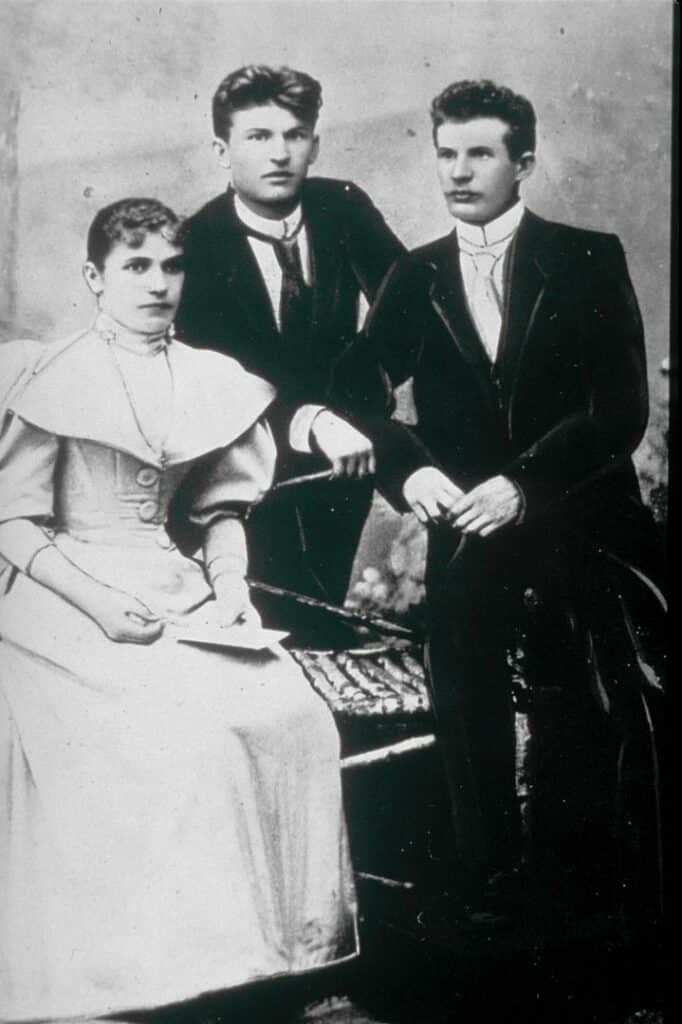
Teški biznis
Firstly, after a difficult first year, they switched to making canvas shoes. Thereafter, they started to modernise the business. In the first place, they installed new steam-driven machines. Later, in 1905, they streamlined and mechanised their factory floor. In just over a decade since they started, they were one of Europe’s first mass producers of shoes.
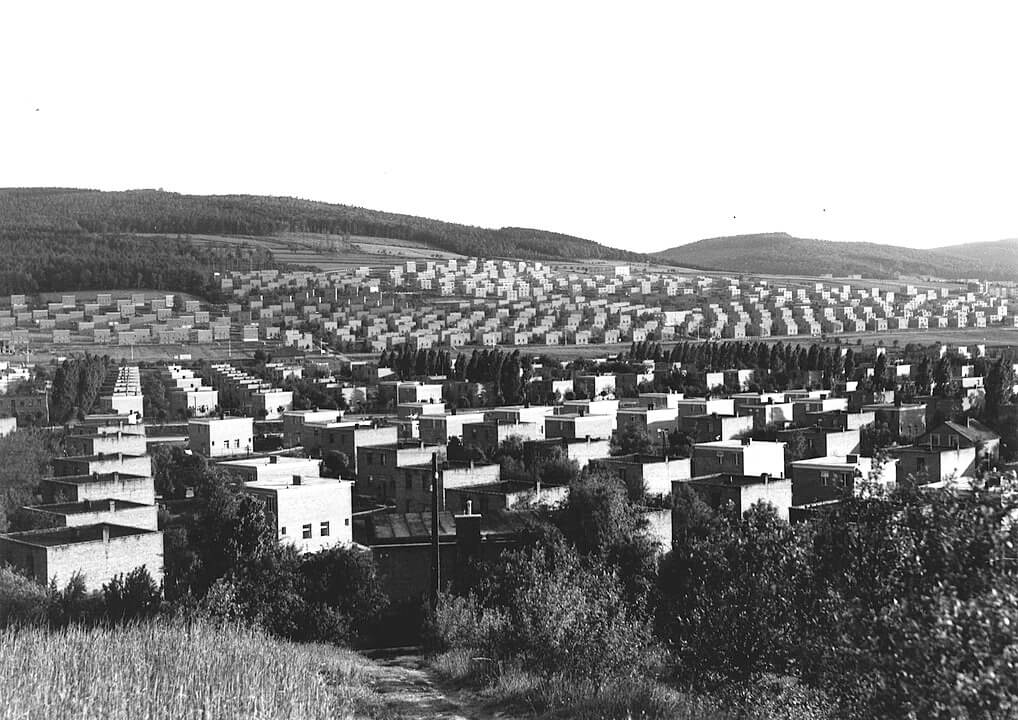
On account of the economic depression following World War I, the Baťas responded radically. Specifically, by cutting the price of Bata shoes in half but keeping the high quality. Moreover, workers agreed to a temporary 40 percent reduction in wages. In exchange, Baťa provided them with food, clothing, and other necessities at half-price. Also, they introduced one of the first profit-sharing initiatives. Thereafter, all employees were associates with a shared interest in the company’s success. Altogether, with these innovations, the Baťas were ensuring the company’s survival.
Success!
Straightaway, they saw the public response. While competitors folded, Bata shoes were actually growing. But, they were far from finished. As part of the continuing expansion, in 1931 they opened a Bata enterprise between Vukovar and Borovo village.
Borovo-Bata (Bata-ville Borovo, Borovo Naselje)
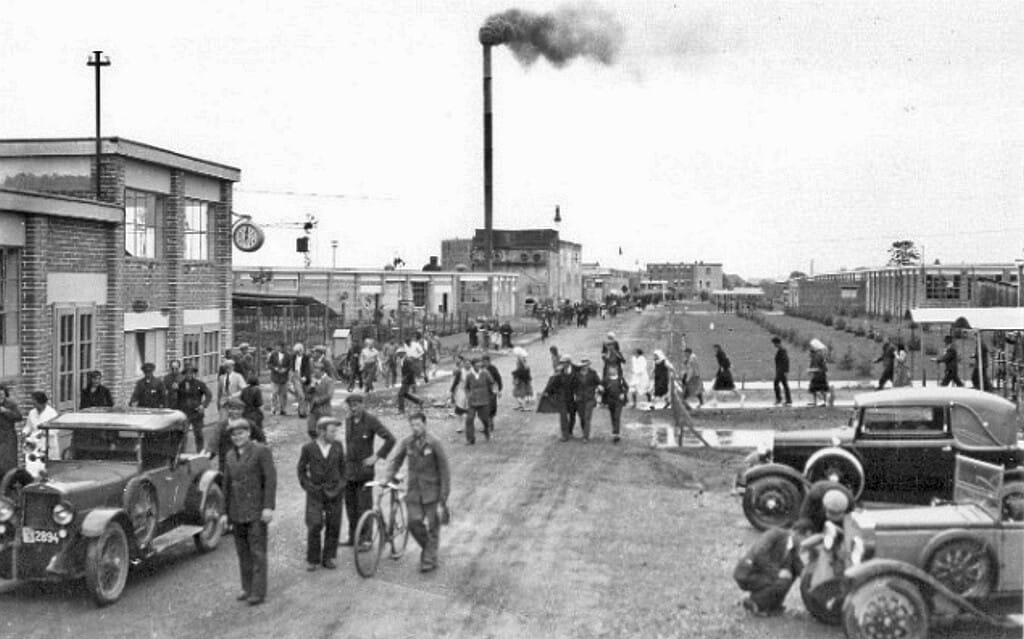
These days known as Borovo Naselje, this Vukovar neighbourhood began life as a community of Bata factory employees. Not only did Bata build the houses, but also surrounding infrastructure like roads. Thereafter, both the business and population boomed (in five years, the population doubled). Employee numbers rose from 510 in 1931 to 6,290 in 1939.
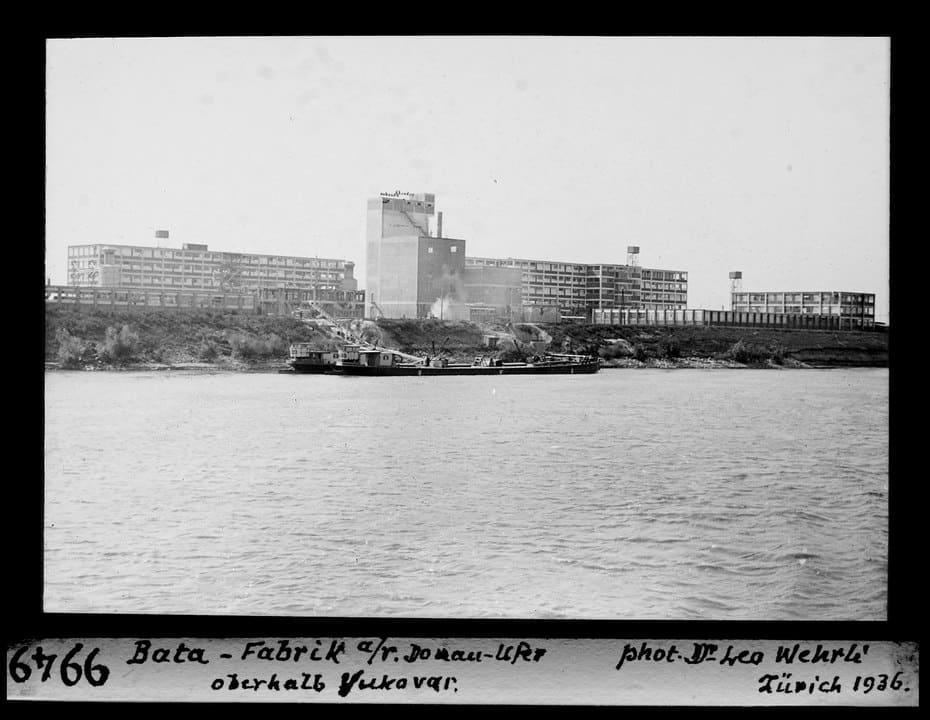
Actually, the Baťa family saw Borovo as the new centre of operations. Because the rising menace of Hitler threatened their original base near the Sudetenland. Subsequently, the expansion included building a local airfield to service the industry. Specifically, the flight routes ran Budapest – Borovo – Zagreb – Vienna. Also, Belgrade – Borovo – Zagreb – Graz – Vienna. By 1940, the company had 565 stores in Yugoslavia and exported to Asia, Africa and America.
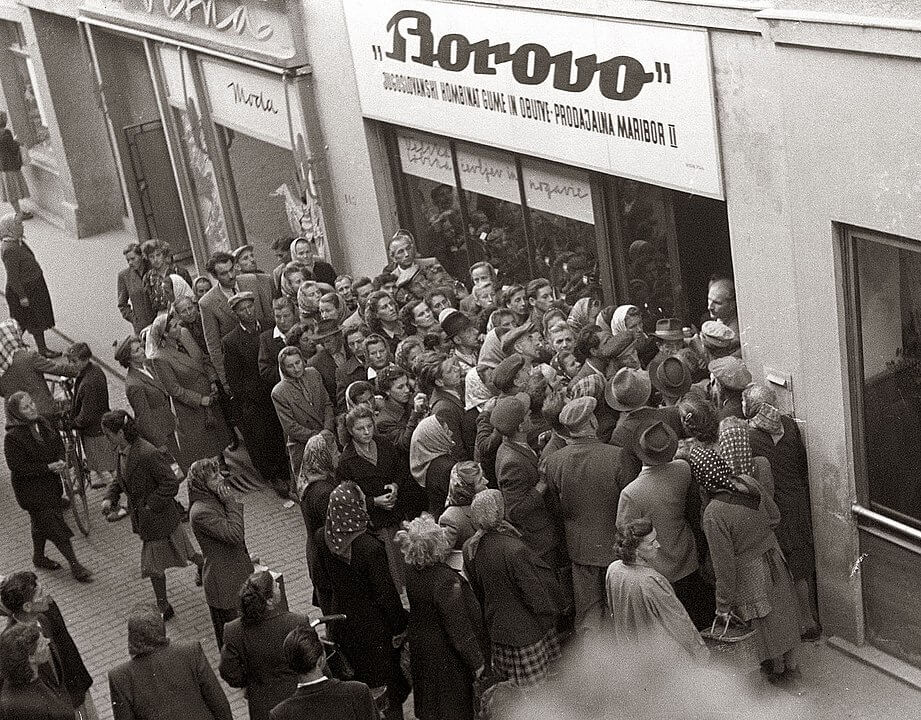
Borovo shoes in Yugoslavia and beyond
Following World War II, the Baťa family saw Communists confiscating all of their eastern operations. But, the factory in Borovo thrived. Not only did Borovo become the biggest shoemakers in Yugoslavia, but also they continued exporting. Towards the end of the 1980s, Borovo employed over 22,000 people. Moreover, its annual production was huge. Specifically; 23 million pairs of shoes, over 580,000 car tires and 12,500 technical rubber goods. Of course, production was interrupted by war in the 1990s. However, today you can still buy shoes with the Borovo label. What’s more, they’re great and retain the original Baťa family business ethos – high-quality shoes at affordable prices.

The first Croatia-born Nobel laureate: Leopold Ružička
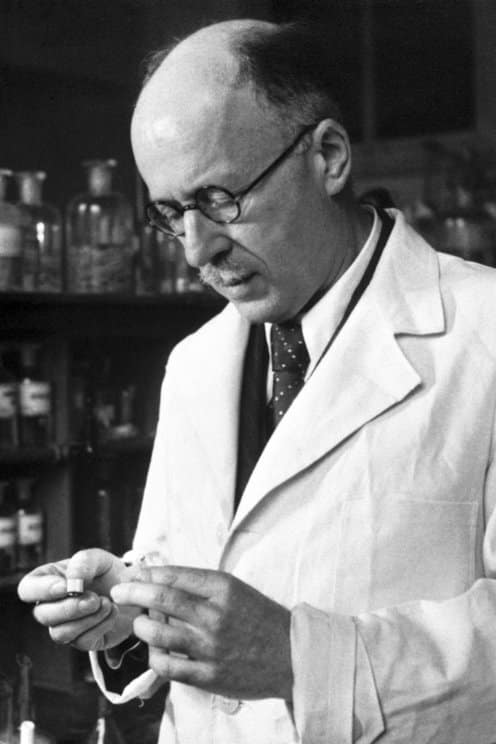
Up to the present time, there are only two Nobel laureates from Croatia. In the first place, Vukovar-born Leopold Ružička, who won the Nobel Prize for chemistry in 1939. To clarify, he was the first Nobel prize winner born in Croatia.
In spite of starting his career in perfumes, he soon moved to more academical works. Furthermore, his research would have wide-reaching implications over several sectors of society.
Organic chemiostry
In detail, Ružička became interested in steroids and sex hormones. Subsequently, he secured his place as a giant in the world of pharmaceuticals with the first synthesis of testosterone. Thereafter, his laboratory became a world centre of organic chemistry. Although he was awarded in 1939, his greatest achievements in chemistry actually lay ten years further ahead. But, these achievements are nowhere near as easy to explain.
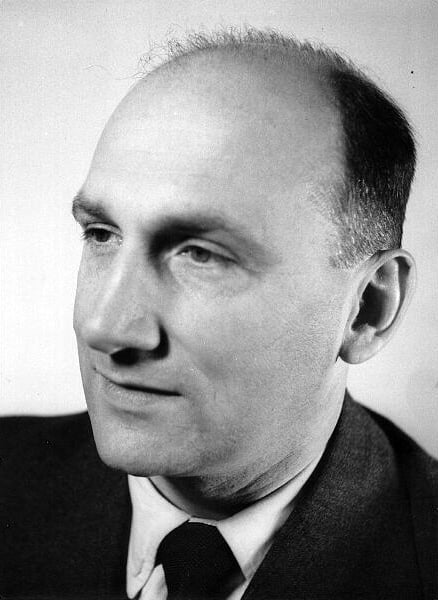
Passing the torch
Although he retired in 1957, his story was not quite finished. Because, he turned his laboratory over to a younger Croatian chemist, who for so many years he had mentored. Subsequently, that very chemist, Vladimir Prelog, became Croatia’s second Nobel Prize winner for Chemistry. Specifically, he did so in 1975 for research into the stereochemistry of organic molecules and reactions.
Top 5 day trips
Ilok and Srijem
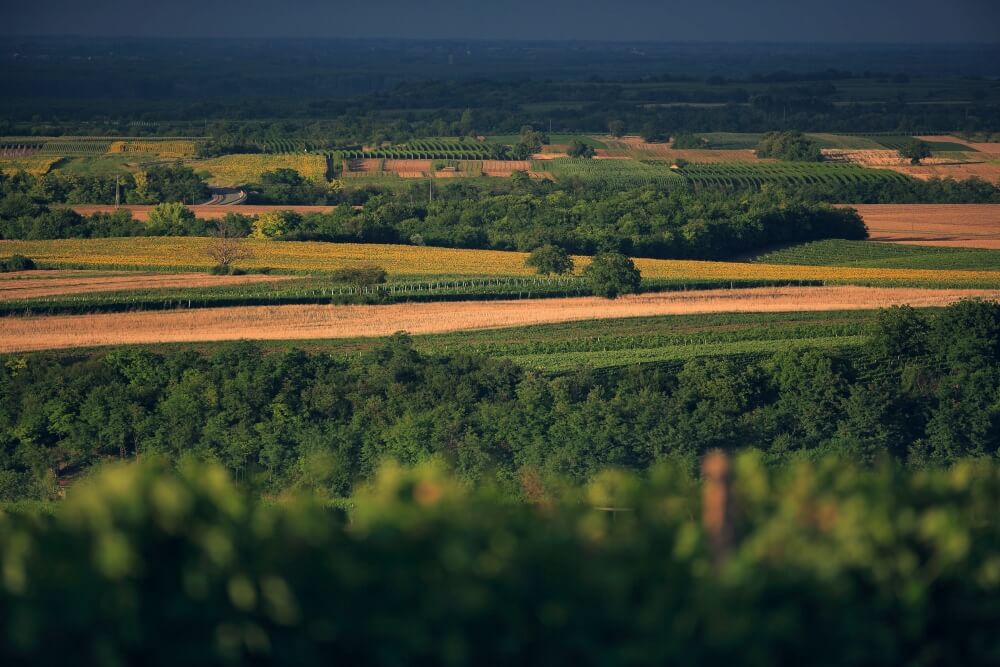
On account of it being the country’s most easterly town, Ilok, like much of Slavonia, is very different from the Croatia most visitors see. In fact, within its surroundings, you’ll still see the land devoted to traditional agriculture. Not only do the neat rows of vineyards create a pretty vista, but also some excellent wines.
Osijek and Đakovo
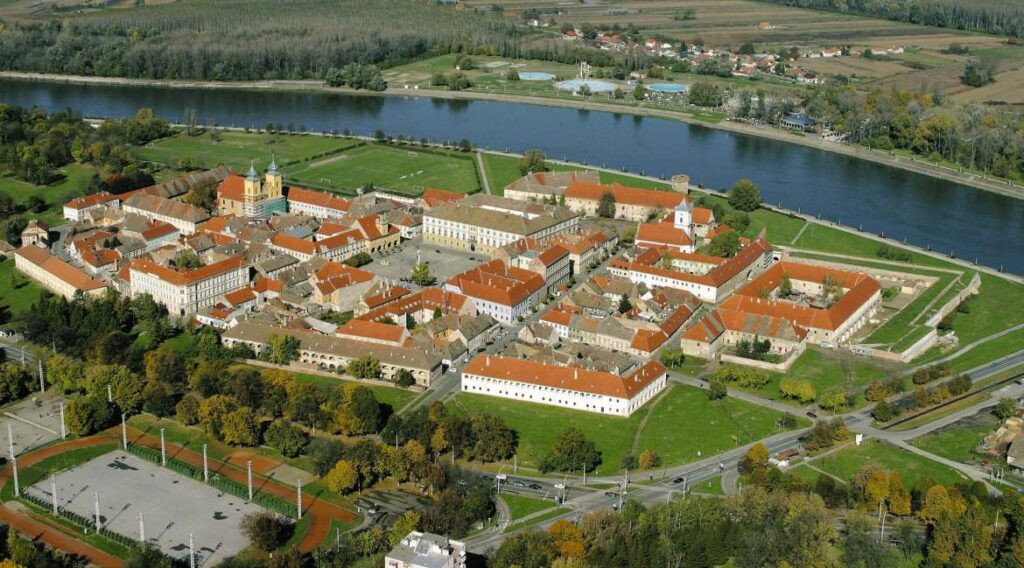
Not only is Osijek (35 km) by far the largest city in Slavonia, it is also the cultural and economic capital. If you want the feel of a bigger city, but with the fresh air of a park, then come here. Notably, Osijek has one of Croatia’s best promenades, stretching for kilometres on both sides of the Drava. Also, its Old Town, Tvrđa has the best-preserved and largest ensemble of Baroque buildings in Croatia. Incredible. By contrast, nearby Slavonian town Đakovo is these days much quieter. However, it is deceptively modest. Notably, the town has one of Croatia’s grandest cathedrals. Without question, its interior is a bonafide masterpiece and no visitor to the region, religious or not, should miss it.
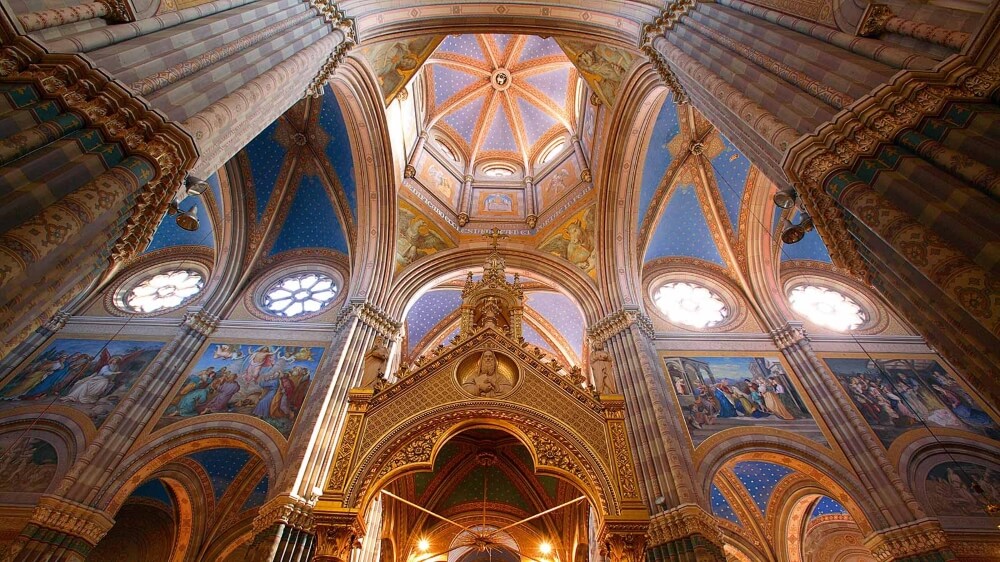
Baranja, Kopački Rit and Bilje
By comparison, the region north of the Drava river to Osijek remains relatively undiscovered. Of course, it’s not undiscovered to the people living there. But, most international visitors never see it. Both traditional and accomplished, Baranja is a region where you see people living in harmony with nature. If you’re looking for small-scale wineries, family farms or the bird-rich wetlands of Nature Park Kopački Rit, then this is for you.
Erdut and Aljmaš
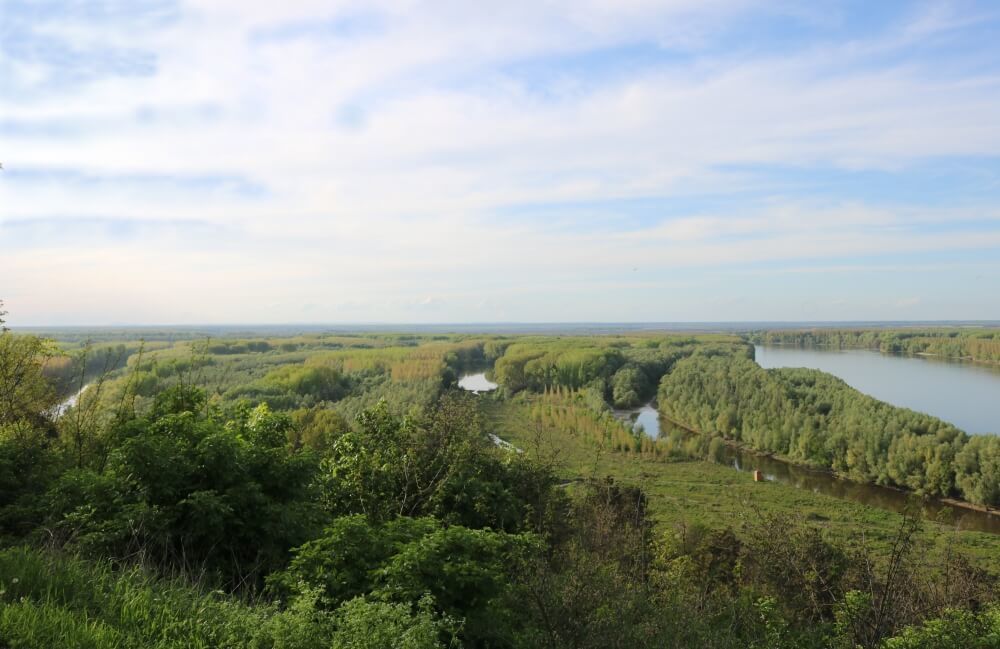
Compared to mostly flat Slavonia, the rise at Erdut, 30 km north of Vukovar, gives epic views. Notably, you’ll see the Danube twist and turn around this gloriously green peninsula. Furthermore, you can walk a newly renovated pathway 10 km along the river to Aljmaš.
Novi Sad
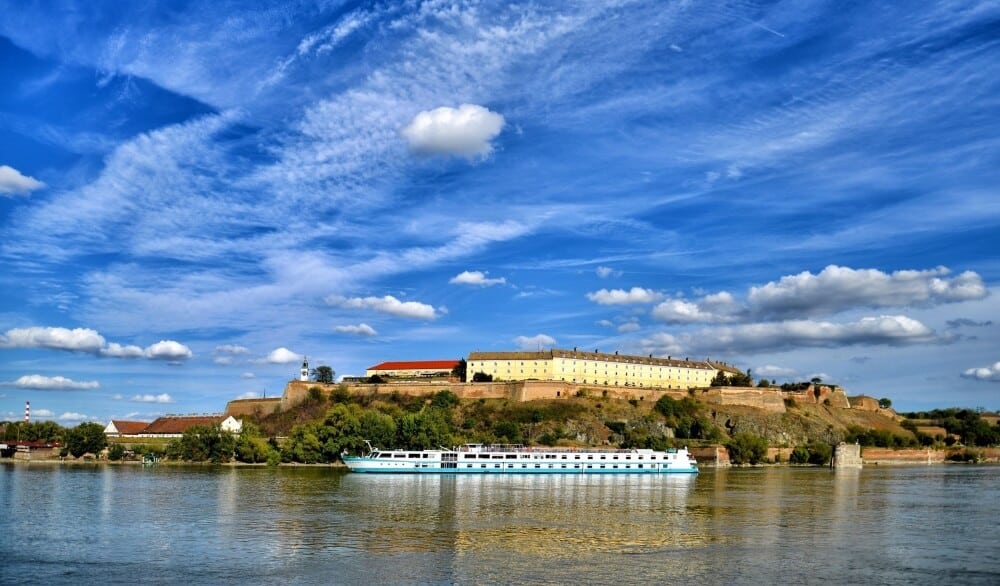
Not only is Novi Sad the second-largest city in Serbia, but also it’s the capital of Vojvodina. Furthermore, at a distance of only 80 km, it’s the perfect day trip. Notably, the city immediately faces the Austrian Petrovaradin Fortress on the Danube.
Where is Vukovar Croatia? Vukovar map
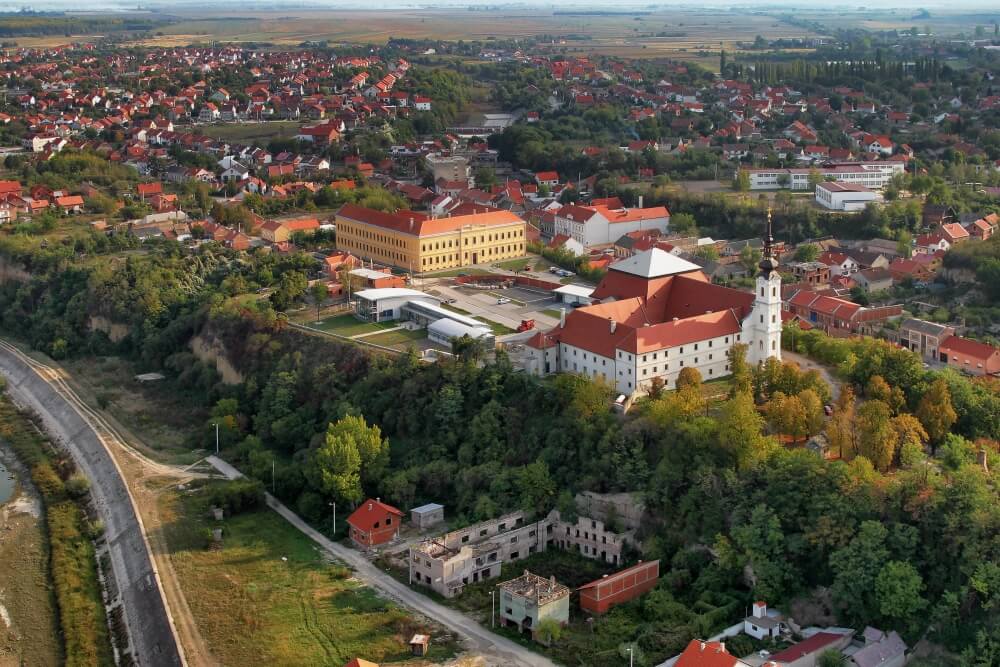
If you’re asking ‘Where is Vukovar?’, then you’ll find Vukovar located in northeastern Croatia. Specifically, Vukovar lies at the point the Vuka river meets the Danube river. At this point, the Danube river forms a natural border between the countries of Croatia and Serbia. Together with Vinkovci, Vukovar is one of the two largest towns in Vukovar-Srijem County. Although, Vukovar is the county seat. Additionally, the town is part of two traditional regions. Namely, Slavonia and Syrmia.
In detail, Vukovar GPS coordinates with respect to latitude and longitude are 45.3452° N, 19.0010° E. Furthermore, the Vukovar zip code is 32000 Vukovar (postal code). However, the town’s eastern part containing Sotin, Mikluševci, Grabovo has the zip code 32232 Vukovar. Furthermore, the town’s northern part containing Borovo has the zip code 32227 Borovo.
Vukovar weather
Generally, the weather in Vukovar is warm and never too dry, the climate is temperate. Certainly, the greenness of the surroundings are a good indication. During the months of May, June, August and September you’re almost guaranteed good weather. Between 20° C (68° F) and 25° C (77° F) is the average temperature during this period. However, the month of June usually has some brief spells of rain.
Both January and February are the driest months. Indeed, on average, there’s just 48mm (1.9 inches) of precipitation in January. But, January is also the coldest month, with an average maximum temperature of ° C (33° F). If you want to know the Vukovar weather today, then see below. Additionally, you’ll see the Vukovar weather forecast for the next few days.
How to get to Vukovar and get around
Flights to Vukovar, nearest airport to Vukovar
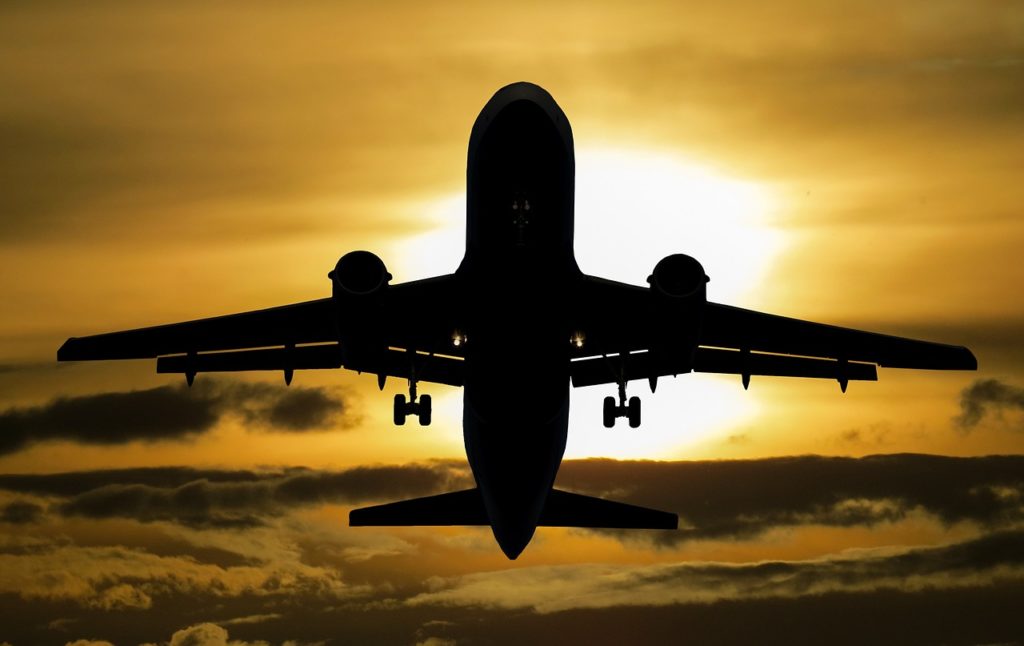
Of course, at only 24 km distance, Osijek Airport (OSI) is the nearest airport to Vukovar. However, the nearest major international airport to Vukovar is Belgrade. In detail, Vukovar is 125 km distance from Belgrade airport (1 hr 40 mins drive time). Additionally, Vukovar is 285 km from Zagreb airport (2 hr 50 mins drive time). Also, Vukovar is 310 km from Budapest airport (3 hr 25 mins drive time).
Road, by car
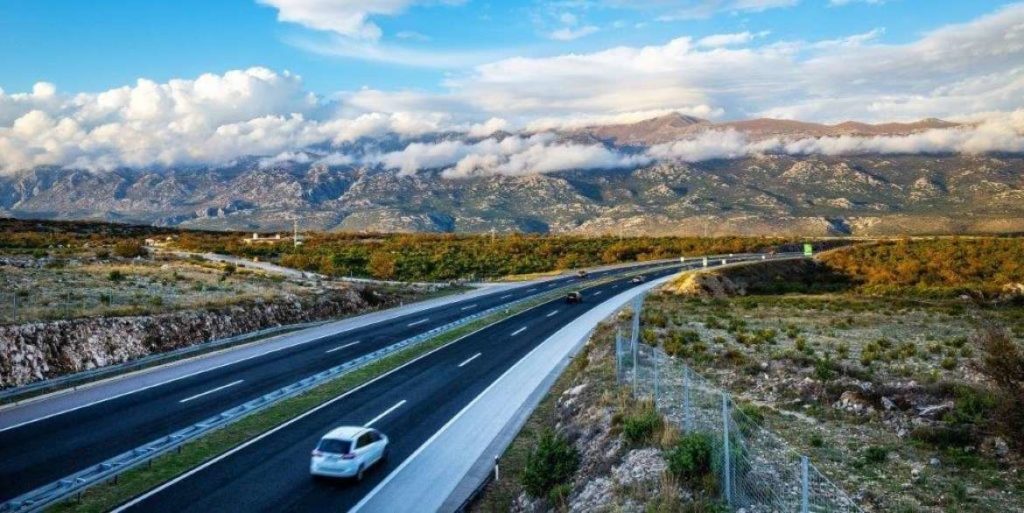
In light of its closeness to the E70 and E73, Vukovar is well connected to the European motorway network. Not only does the E73 go from Budapest to Ploče, via Osijek and Đakovo, but it’s also the quickest road route from eastern Slavonia to southern Dalmatia
On the other hand, the E70 connects northwest Spain to Georgia, via Slovenia, Croatia, Serbia and Turkey. If you’re travelling from Zagreb to Vukovar by car, then take the E70 to Županja. Thereafter, you need the D55 to Vukovar via Vinkovci. If you’re travelling to Vukovar from the south, then leave the E73 at Đakovo. Thereafter, take the D46 to Vinkovci. If you’re travelling to Vukovar from the north, then leave the E73 at Osijek. Thereafter, take D2 to Vukovar.
Looking for a fast, reliable and trouble-free transfer to or from Vukovar? Contact TC transfer partner Adriatic Transfers for your one-stop solution.
By boat, Danube river cruise ships from Budapest to Belgrade via Vukovar, Vienna, Romania
On account of the Danube, in regular years Vukovar is a stop for cruise ships. Both Vienna and Budapest are start points for a Danube cruise via Vukovar. By the same token, you can travel eastwards to Belgrade, Plovdiv, the Black sea and Istanbul.
Train to Vukovar
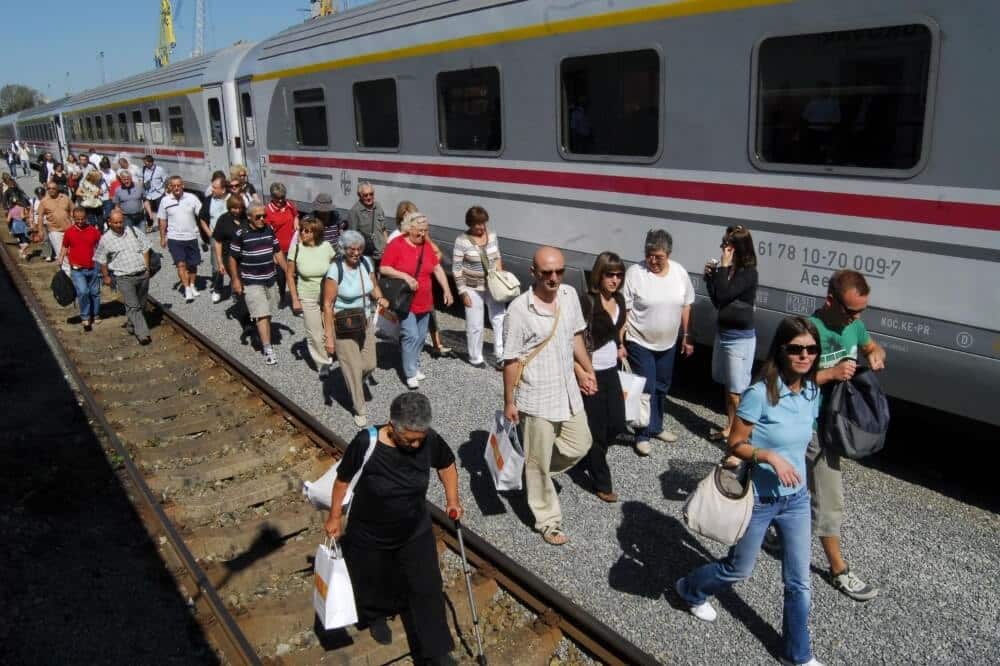
Point often overlooked, you can travel very easily to Vukovar on international trains. Not only can you travel Vukovar to Pécs in Hungary by train, via Osijek, but also it’s near Vinkovci. In detail, Vukovar is 16km distance from Vinkovci and it takes around 30 minutes on the train. Previously, Vinkovci was Croatia’s third best-connected city by train, after Zagreb and Rijeka. Actually, it’s gradually regaining this title.
Via Vinkovci
Usually, you can travel from Vukovar to Belgrade by train, via Vinkovci. Also, Vukovar to Zagreb by train via Vinkovci. From there, you’re connected to the European rail network. Previously, you could travel to south Dalmatia from here, through Bosnia. However, no trains currently run from Croatia to Bosnia. Therefore, in order to travel from the coast to Vukovar by train, you now must go through Zagreb.
Local and intercity: Vukovar bus
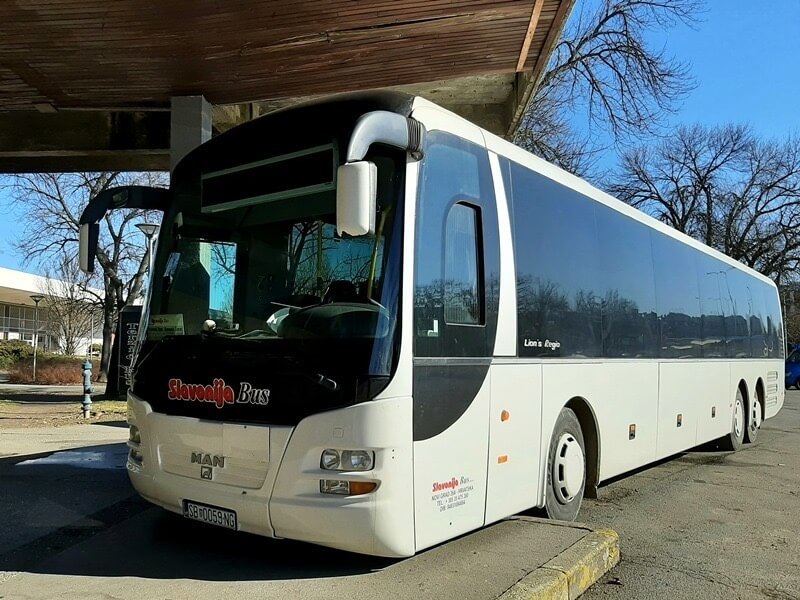
If you want to travel Croatia by bus, then nothing could be simpler. Indeed, travelling intercity by bus in Croatia is a fast, popular and reliable option. Therefore, you can easily travel to Vukovar by bus from anywhere in Croatia. Furthermore, Vukovar has local bus lines run by Slavonija bus. If you want to learn more about travelling through Croatia by bus, then look here.
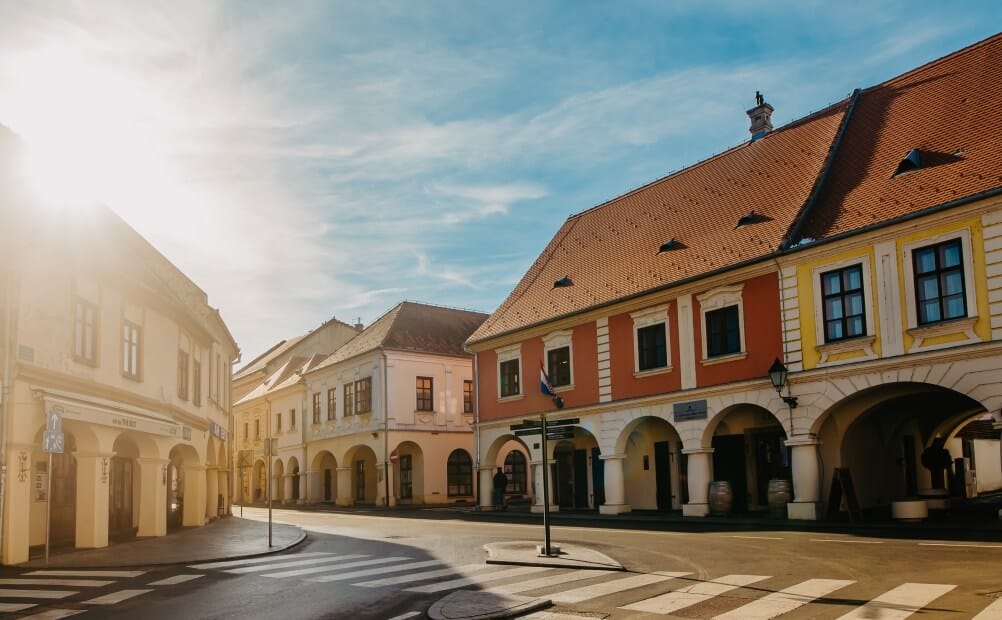
More information
If you want more information about Vukovar, then check the town tourist board here.
If you want to follow the latest news from Vukovar, then check out Total Croatia News.

